Just over a month ago, Shimano unveiled the most anticipated product launch of 2018: the brand new 12-speed M9100 XTR groupset.
Took ’em long enough eh?
We brought you all the juicy details in our news story here, and then we gave you a virtual tour of the groupset and all its fancy features in this video from Fort William.
To follow up on our first look of the new groupset, Shimano invited me out to Kranjska Gora in Slovenia last week to see how the new XTR components performed on the trail. You may have already read my first ride review of the Shimano XTR 2-piston and 4-piston brakes here, where I compared the two braking systems in terms of power, adjustability and ergonomics. Right now though, we’re going to take a closer look at the 1×12 drivetrain that I rode for three days in Slovenia.
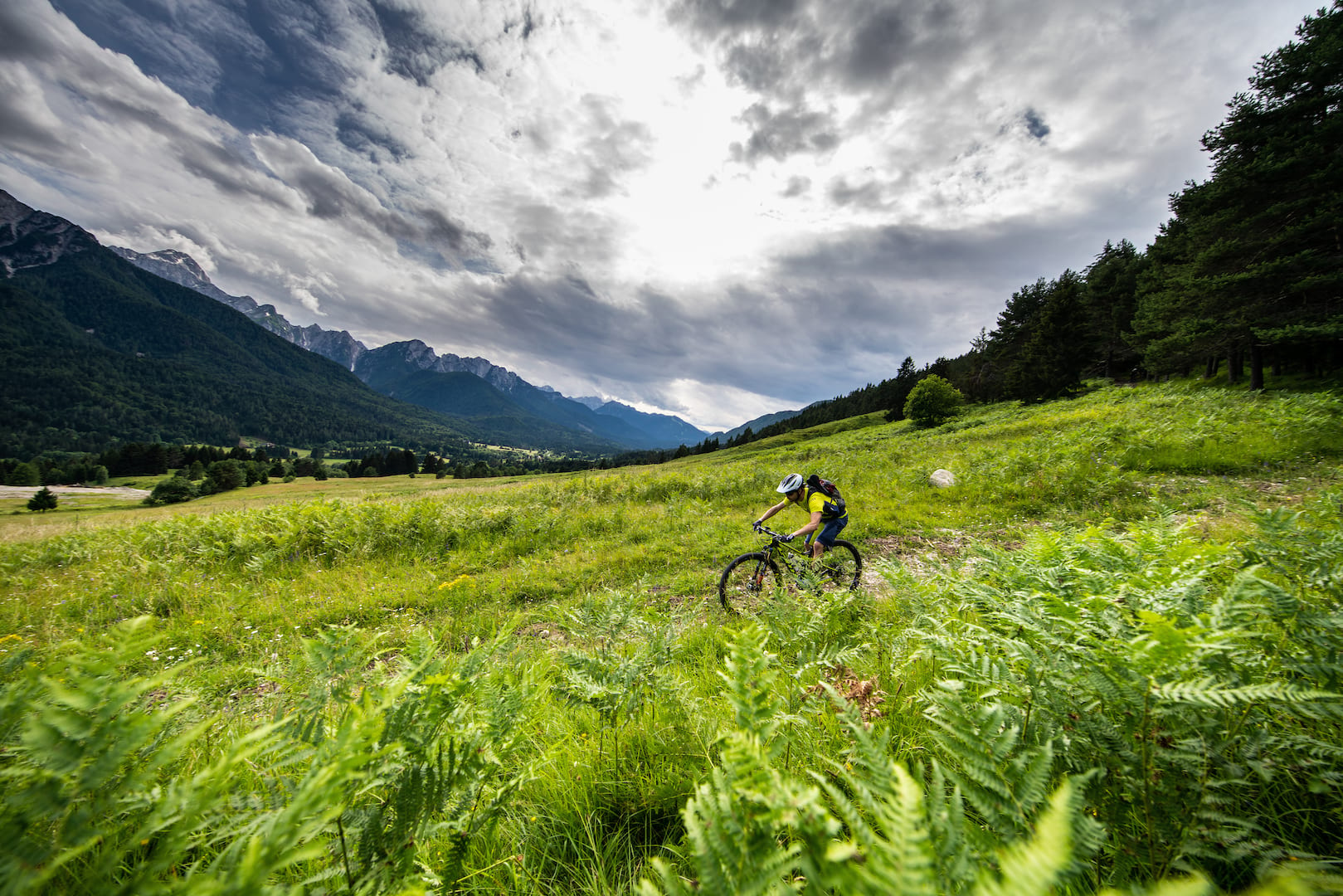
On the first morning of the XTR Media Camp, us journos had the opportunity to get our hands all over the new components during a Q&A workshop, where we sat with the crew from Shimano and peppered them with questions about compatibility, adjustability, and serviceability. Small details that had been missed in earlier press releases were revealed to us, and we got the lowdown on all the various configurations that XTR can be setup in. There is a tonne of detail found in each part, and once you get up close to see it all for yourself, you begin to grasp why it took Shimano four years to develop this groupset.
I also asked Shimano about its new Micro Spline freehub design, and whether we’ll see the design licensed to other brands – namely Hope, since that’s been the most asked question from our readers. Shimano told us that it’s still ‘in conversation’ with other brands, but nothing has been confirmed yet. We’ll just have to wait and see exactly which brands will be able to come on board, but surely wider compatibility would help Shimano to get more groupsets on more bikes?
Later in the day we geared up for our first ride on the XTR groupset, which would see me paired up to a Scott Spark RC World Cup test bike complete with a 1×12 drivetrain, a 10-51t cassette, and the lighter 2-piston Race brakes. I actually rode the same bike on Day Two, having accidentally blown up a shock on a KTM Scarpe during setup. Whoops. Day Three was a much bigger all-day ride that would see us being shuttled out to Soča Valley to ride a steeper and longer descent. I rode a Canyon Spectral with more powerful 4-piston Enduro brakes, a PRO Koryak dropper post, and the same 1×12 drivetrain configuration.
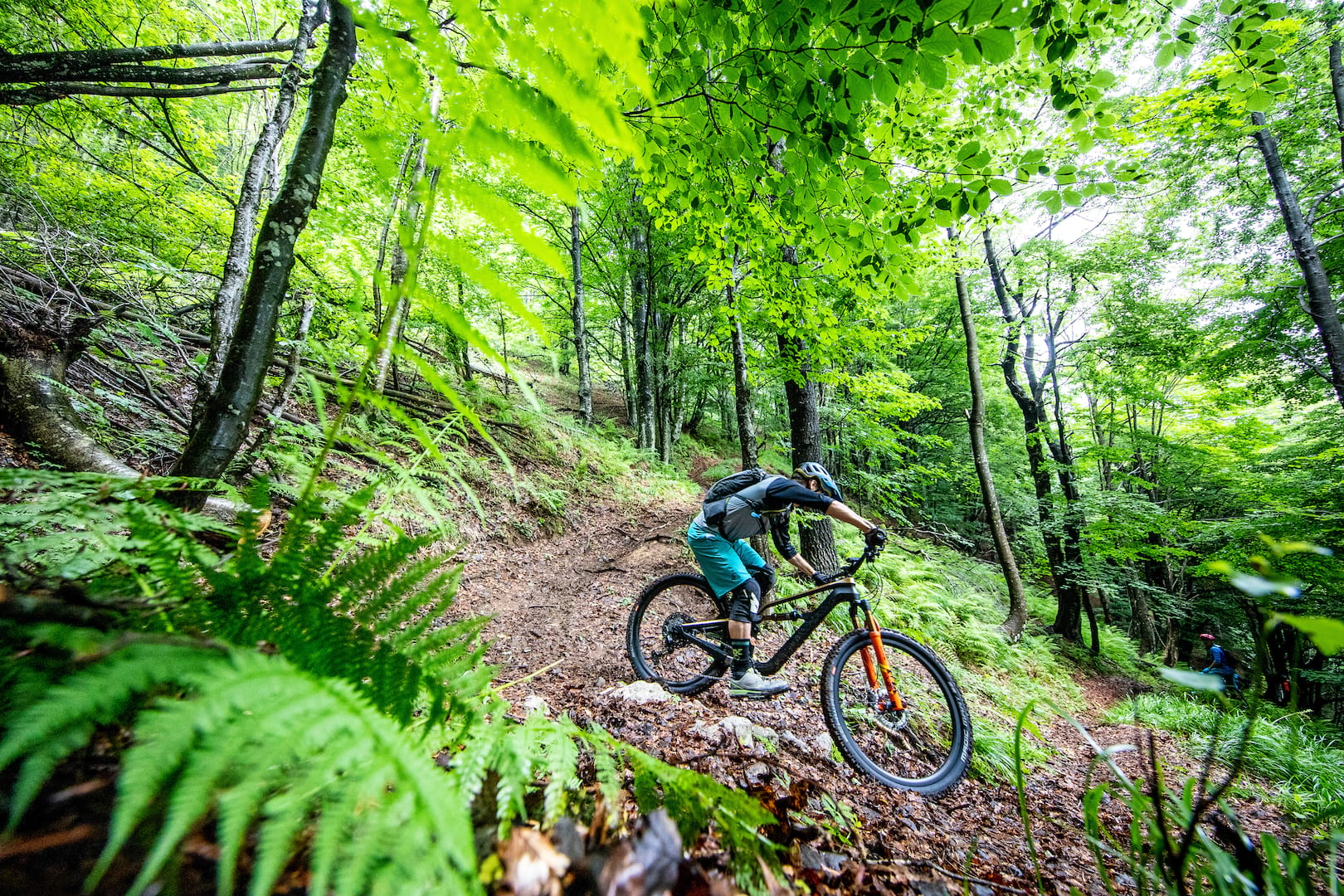
First Ride Impressions
Right, so I’ll cut to the chase. In a nutshell, Shimano’s new XTR drivetrain is smooth. Very smooth. And quiet too.
That’s hardly a surprise – XTR has always offered silky smooth performance. After all, it is a premium groupset with a premium price tag, so you wouldn’t really expect anything else.
Perhaps the biggest surprise of the new XTR drivetrain is how effectively – and quickly – it shifts under power. Shimano has introduced a design called ‘Hyperglide+’ with its new XTR cassette, and according to Big Blue, you can shift both up and down the cassette under power. That’s right. Shimano says you can do the very thing that you’ve been taught and conditioned not to do. But after spending a good while climbing out of the saddle and deliberately trying to mis-time my shifts while putting as much of my weight through the pedals as possible, I can attest that the design works. There’s a loud ‘ping!’ from the chain as it settles into place, but that’s it. And according to Shimano, each shift occurs in a third of the time as its previous XTR drivetrain. Of course you don’t have to shift under power, but the speed and efficacy that each shift is carried out will be a particularly useful tool for competitive riders who don’t always have the time to pre-plan each gear change.
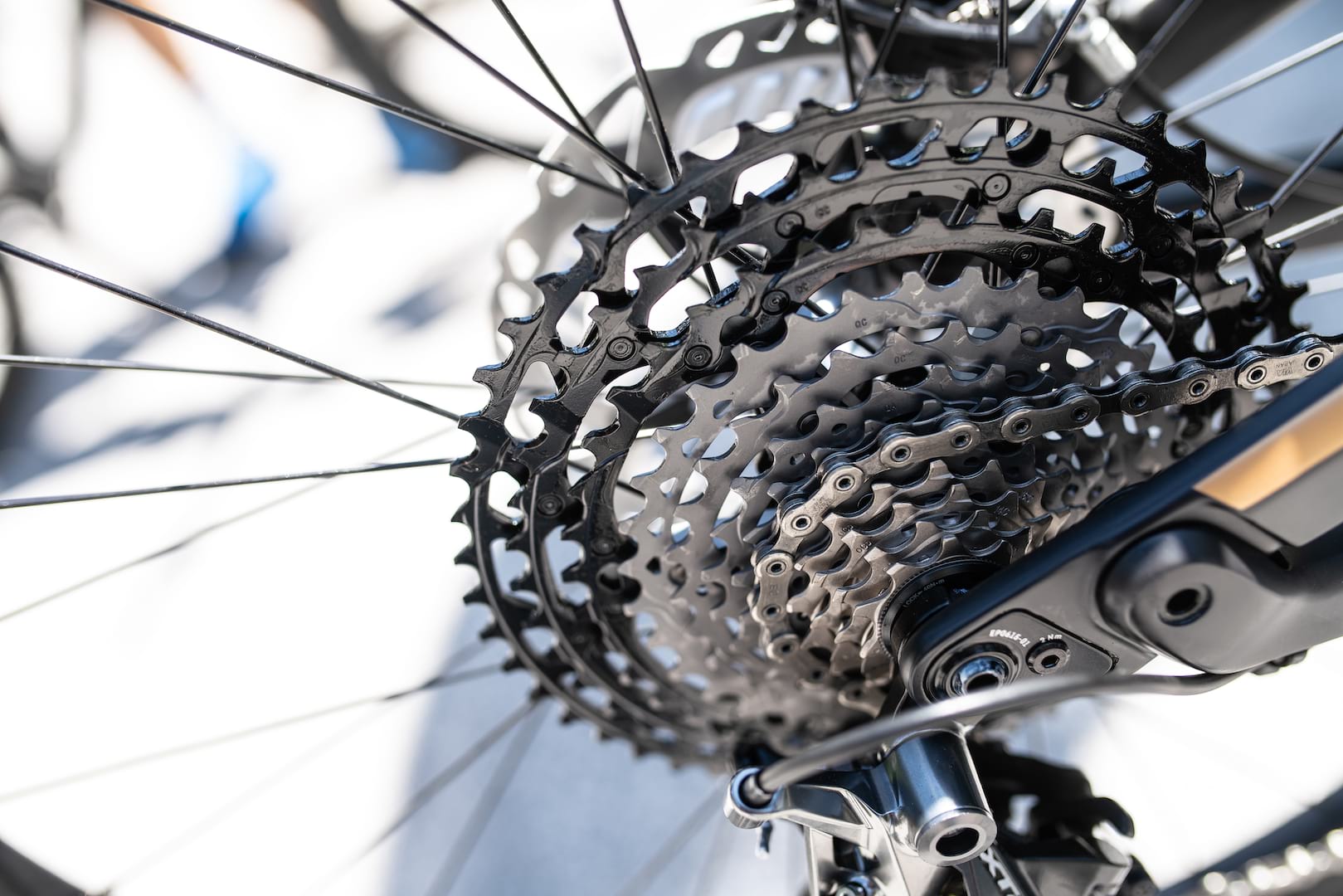
The other feature that I loved most about the new XTR drivetrain is the Scylence rear hub. Using a ratchet system instead of the previous pawls-and-spring freehub design, the Scylence mechanism actually retracts while coasting, which reduces friction and all but eliminates any noise from the rear hub. There’ll be a lot of riders who don’t like this – mainly Hope Pro4 owners. But having spent three days of riding in a big group with no freehub clicking at all, I’ve grown to really, really like it. Aside from the serenity aspect, having a quiet freehub means you can actually hear your tyres and how they’re interacting with the trail. On a particularly fast, loose and scrabbly fireroad descent, I could listen to the side knobs of the tyre as they approached their grip limit, allowing me to modulate my lean angle and braking to ensure I didn’t actually hit that point. That might sound like bullshit, but it isn’t, and I honestly think it’s a performance advantage. I also like that adjusting the rear brake in the workstand is considerably easier without having a noisy freehub to drown out the sound of a rubbing disc rotor.
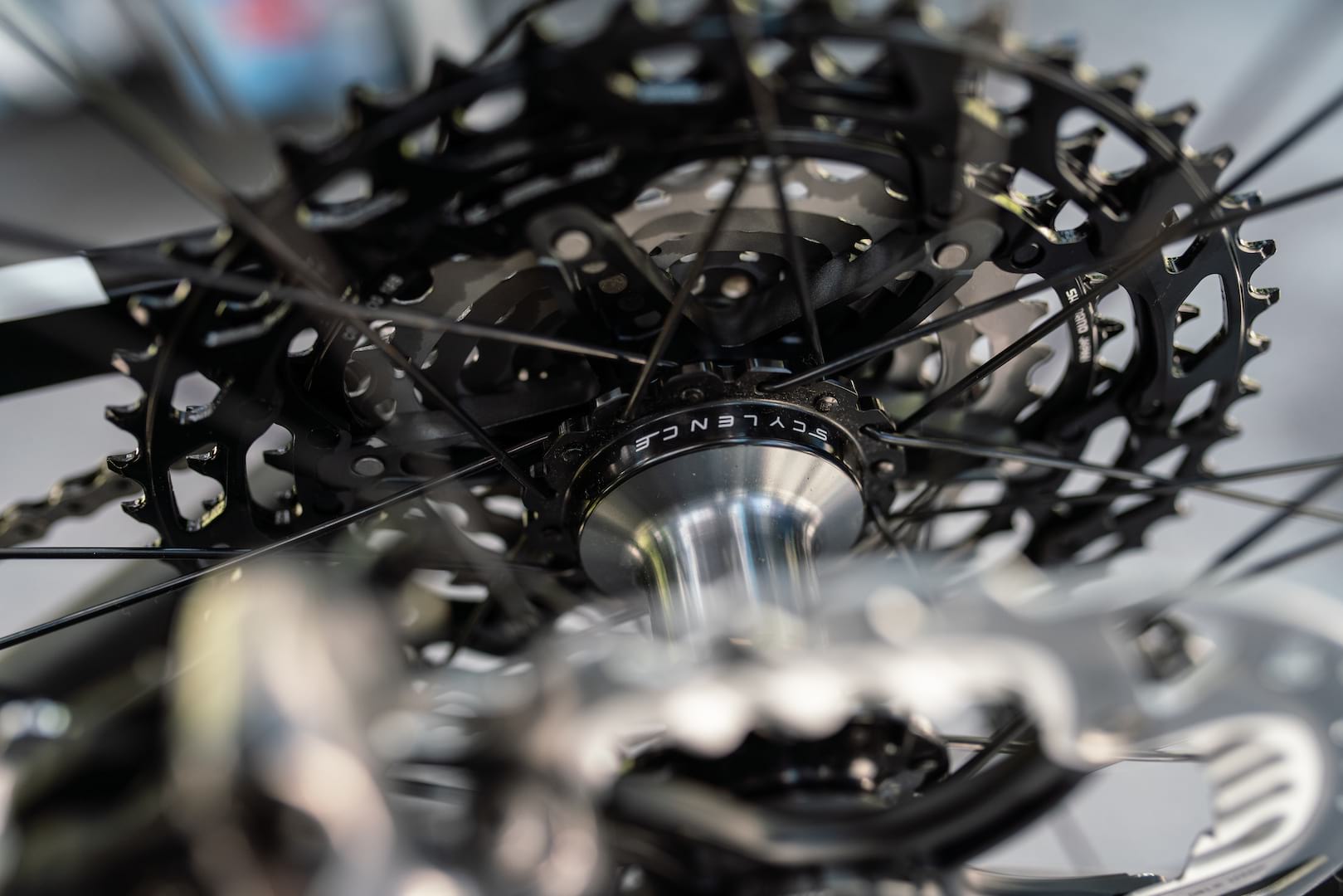
What about the downsides?
Considering the price, thankfully there aren’t many. That said, I can’t say I’m a fan of the black alloy sprockets on the cassette, mostly from a wear perspective. Being alloy, the teeth will wear faster than the titanium and steel sprockets used for the rest of the cassette, and once you wear through the black coating, I suspect it’ll look a little haggard. I’d rather those sprockets were left with a more natural alloy finish, though your bothersome levels may vary.
The trigger shifter has a really positive and punchy feel to it, which makes it unlikely to mis-shift when you’re doing your frog-in-a-blender impersonation on really shouty descents. The flip side is that – compared to a SRAM trigger shifter – the paddles require more thumb force to activate. This is particularly noticeable for the double shift on the smaller paddle. Again, Shimano has done this deliberately to help you avoid accidentally over-shifting, and it does have a satisfyingly chunky feel, but I still found it noticeable having come off a SRAM X01 Eagle drivetrain.

Otherwise I have little to report on in terms of issues, but then we did only spend three days riding the 1×12 drivetrain. We also didn’t get a chance to try out the 2×12 system, which I’m a little bummed about because I reckon that new Mono Lever shifter design looks super neat. I’m guessing the front shifting would probably be the best you’ve ever used too. It’s a bit late though – even Shimano admits the 2x option isn’t likely to be that popular, and it expects that almost all of the demand will be for the 1×12 setup with the big 10-51t cassette option. Likewise, it sees the 1×11 configuration as being a very racer-oriented product – you’re probably not considering that setup unless your last name is Rude or van der Poel. But then the options are there for those who really want them.
We’ll be getting our hands on an XTR groupset when stock rolls through in September/October, so stay tuned for further updates.
In the meantime, here’s a closer look at the components I tested on the XTR Media Camp, along with prices, claimed weights, and some detailed info about setup and performance. As always, feel free to drop me any questions you have into the comments section at the bottom of the page, and I’ll do my best to answer them for you!

Shimano XTR FC-M9100 & M9120 Crankset
- Price: £309.99 + £99.99 chainring
- Claimed weight: 511g (w/32t chainring)
In a surprising move for a new product release in 2018, the XTR crankset doesn’t have a new bottom bracket standard. Sticking with its tried-and-tested Hollowtech II design, the XTR crank uses a hollow 24mm chromoly steel spindle, so it’ll work with existing Shimano bottom brackets. The arms remain alloy too, as Shimano still hasn’t made a carbon crankset in-house that surpasses its alloy offerings. The arms are hollow and are made from two pieces of forged alloy that are press-fit together and bonded to create a single hollow structure.
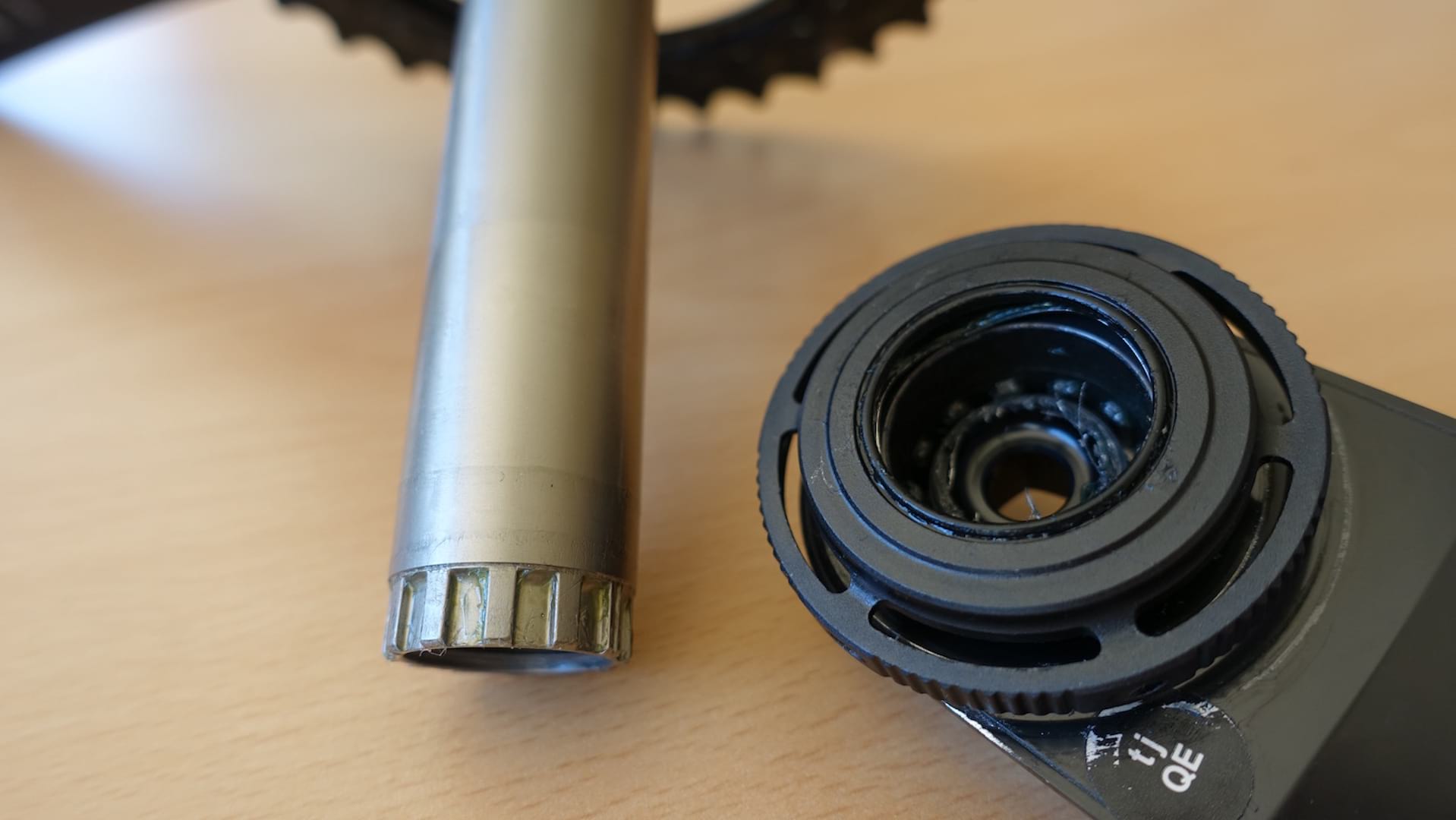

As well as different arm lengths, you can choose from a narrow Q-factor (162mm) or a wide Q-factor (168mm) option. Which one you choose (or have spec’d on your new bike) will largely come down to frame clearance, though in general the narrow option will be found on XC bikes, while the wider one will be used on trail/enduro bikes. The left-hand crank arm is exactly the same for both options, but on the 168mm crankset, the spindle is slightly longer and the right-hand arm is actually a little straighter and broader. A small axle spacer is used on the 168mm crankset due to the longer spindle.
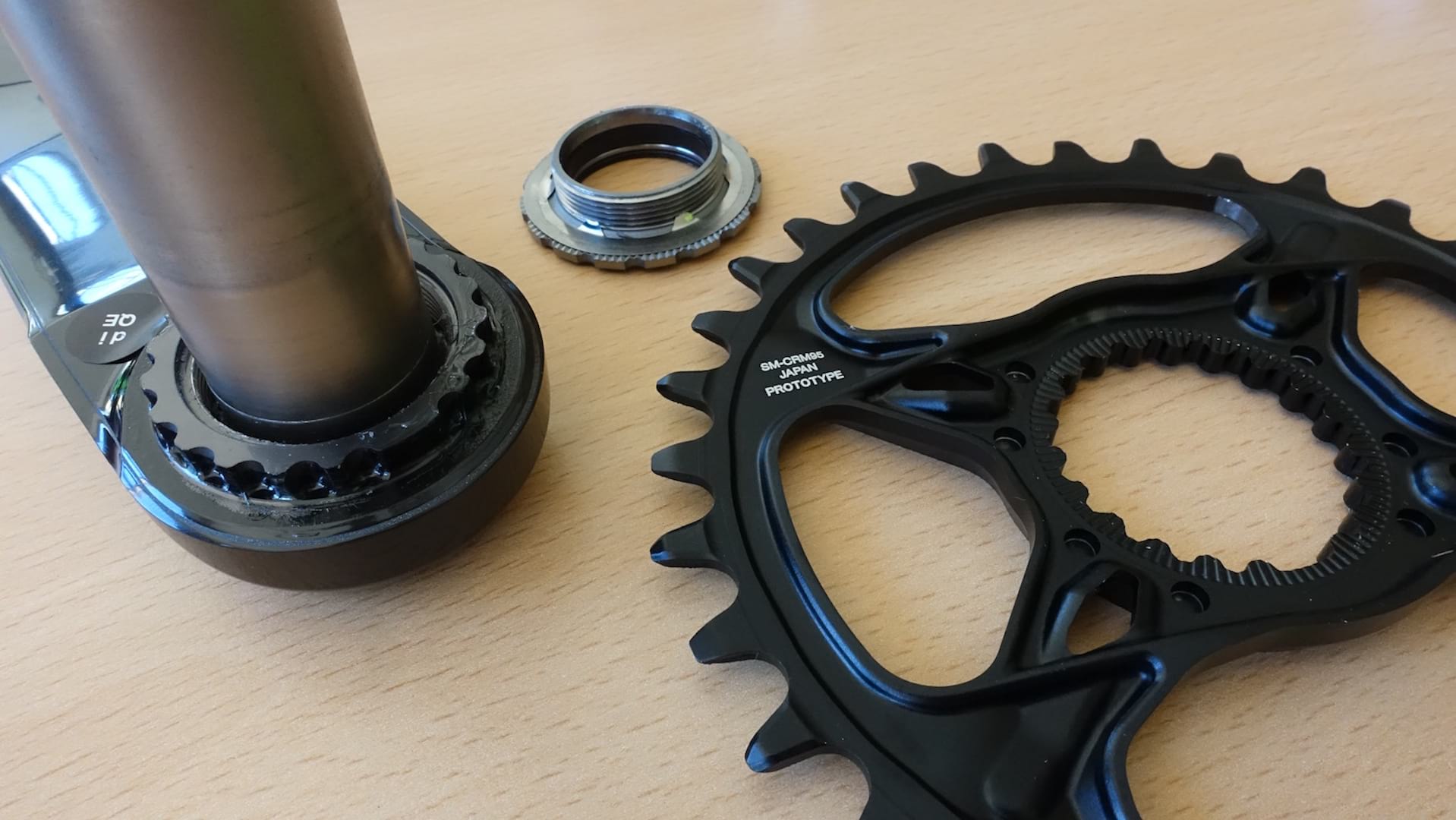
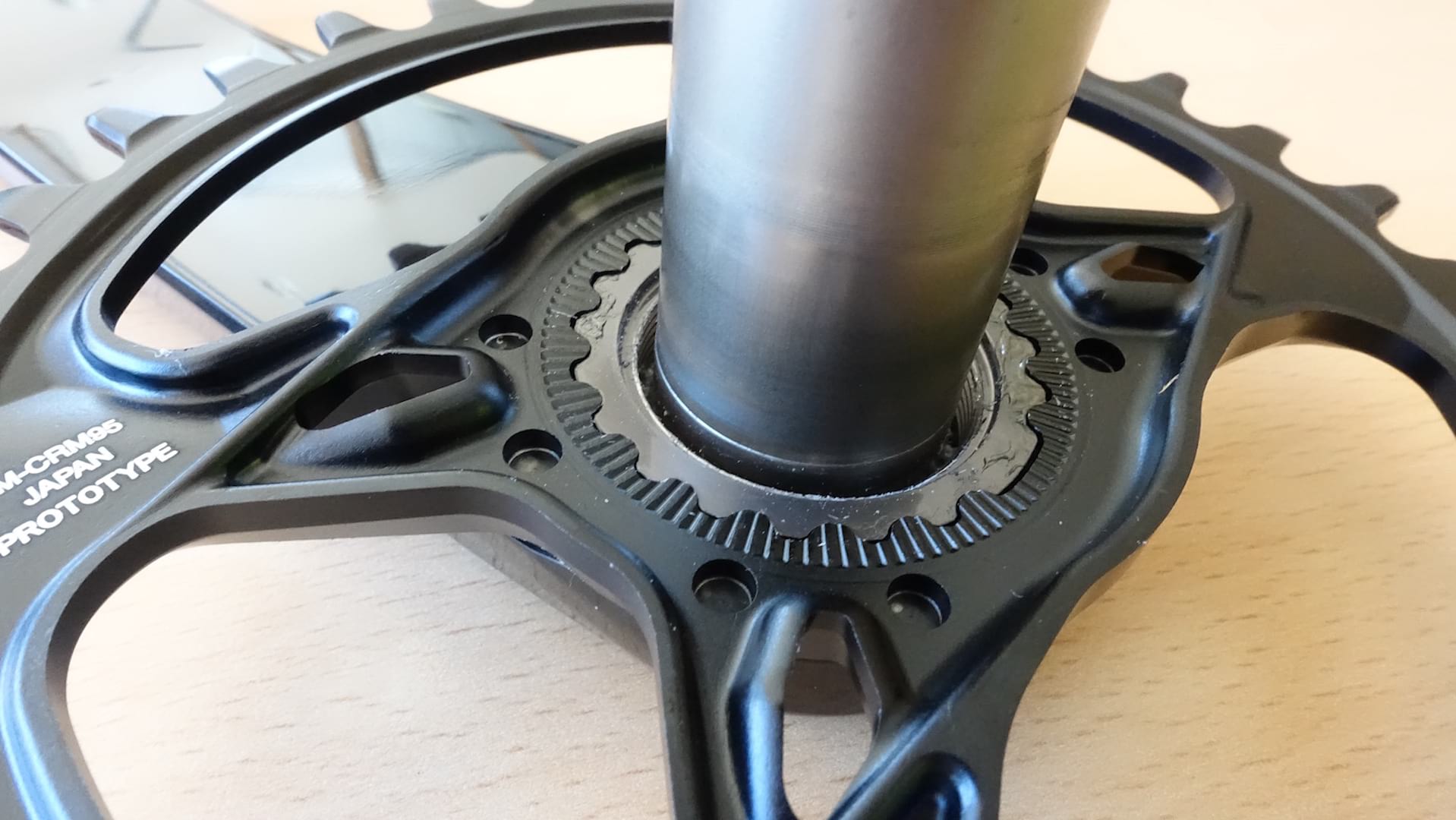
Interestingly, all of the 1x cranksets feature a 52mm chainline. That means there are no longer Boost and non-Boost specific cranksets. Shimano reckons the 52mm chainline works just fine with both Boost and non-Boost rear hubs, even though the cassette on a non-Boost hub will be closer to the centre of the hub.
Compared to previous XTR, the new crankset features a direct-mount chainring design. Chainrings are available in 30t up to 38t, and cost £99.99 each. They mount to the right-hand crankarm on a spline, with a threaded lockring securing them onto the arm. This lockring uses the same splines as an Ultegra BB tool.
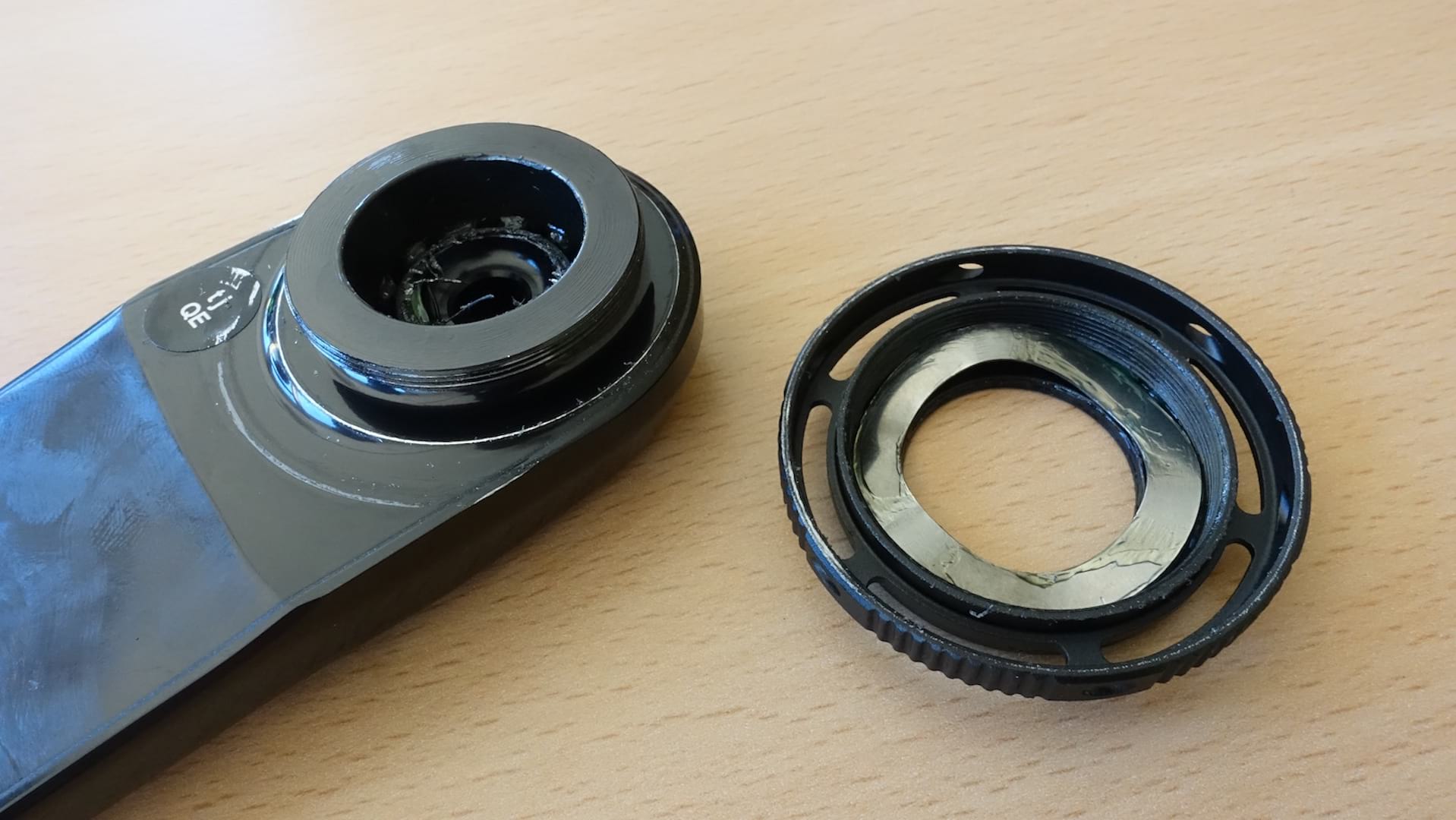
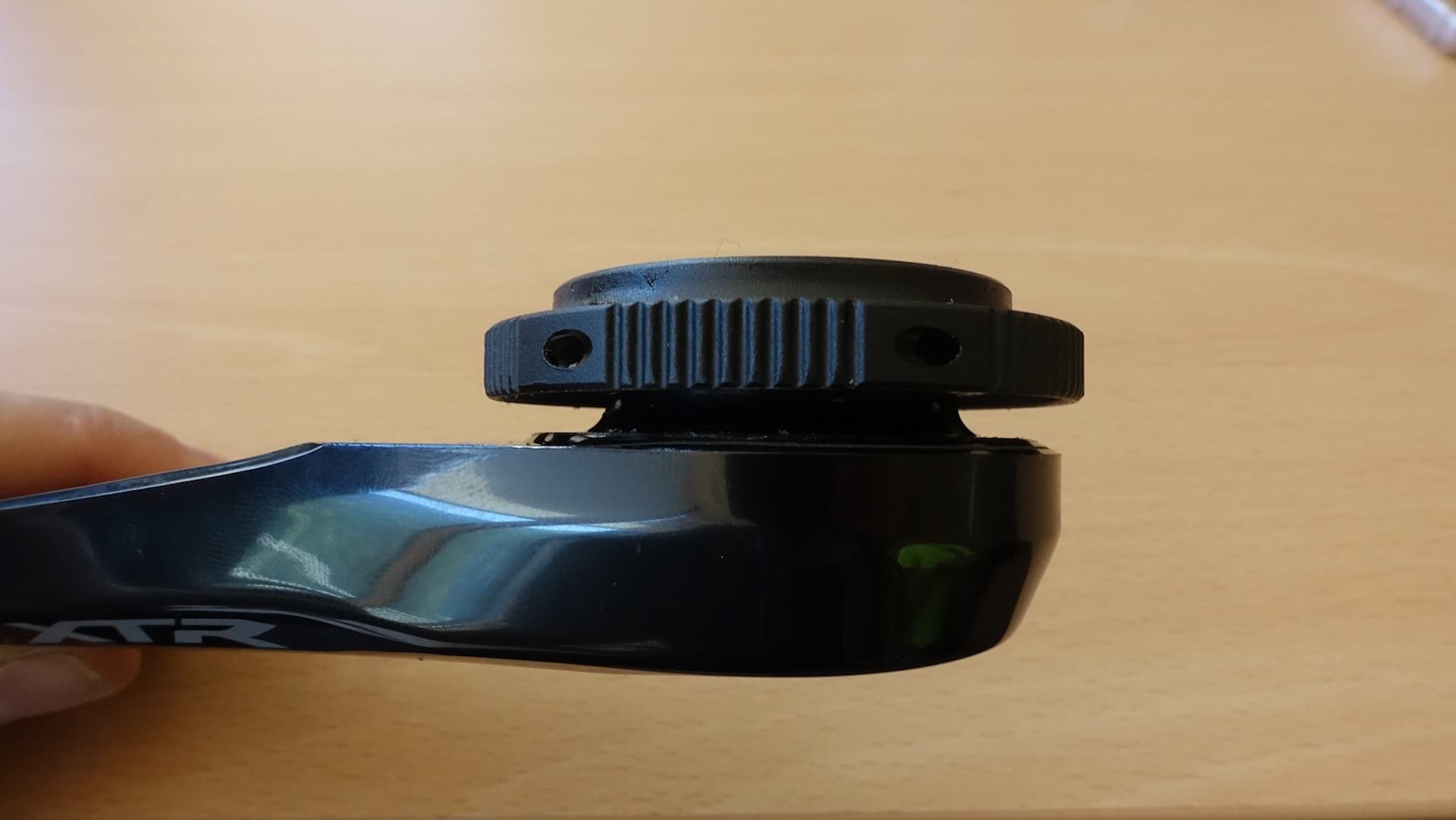
On the double crankset, 38/28t is your only option. The large chainring fits to the crank arm just like the 1x chainrings do, while the 28t chainring mounts with four bolts onto the backside of the 38t chainring. This means you can easily turn a 2x crankset into a 1x crankset if you decide to do so down the line. The arms on the double crankset are the same that you’ll find on the wider Q-factor 1x crankset, so they have the same 168mm Q-factor.
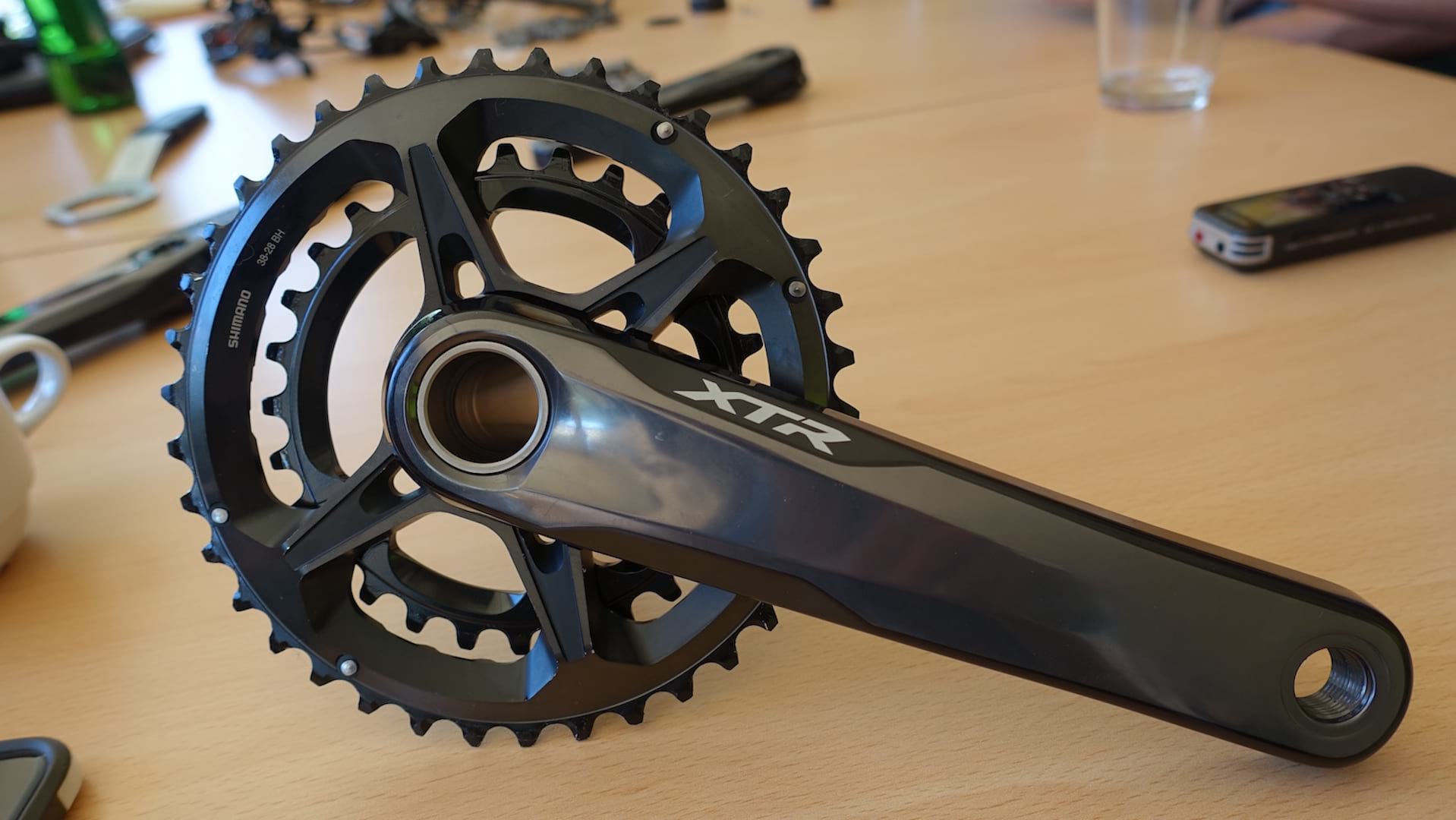
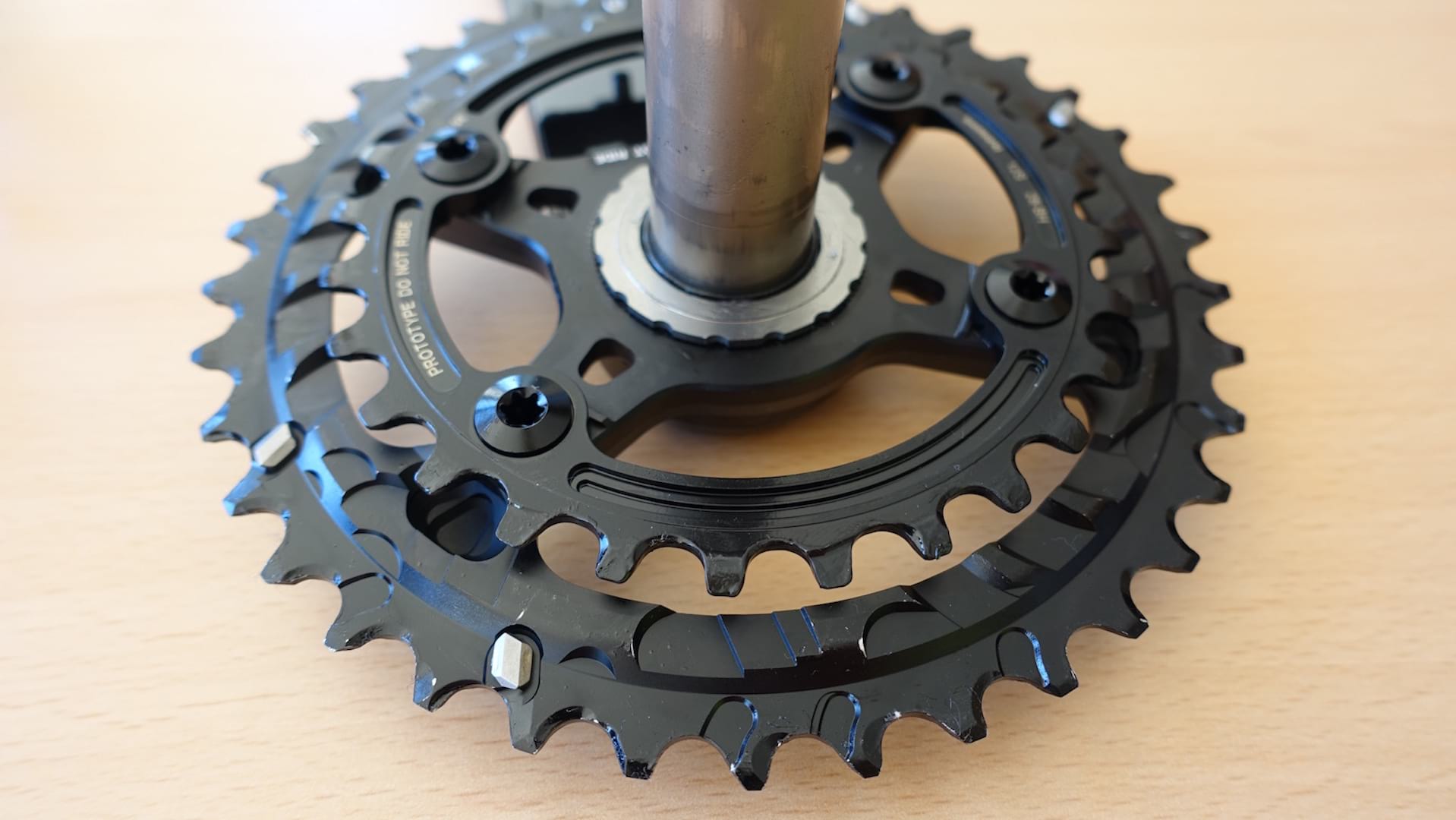
The other change on the new XTR cranks is how they bolt together. No longer will you find two small pinch bolts on the left crank arm. Instead, there’s a huge bolt that requires an 8mm hex key to install. Bearing preload is taken up with a plastic threaded collar.
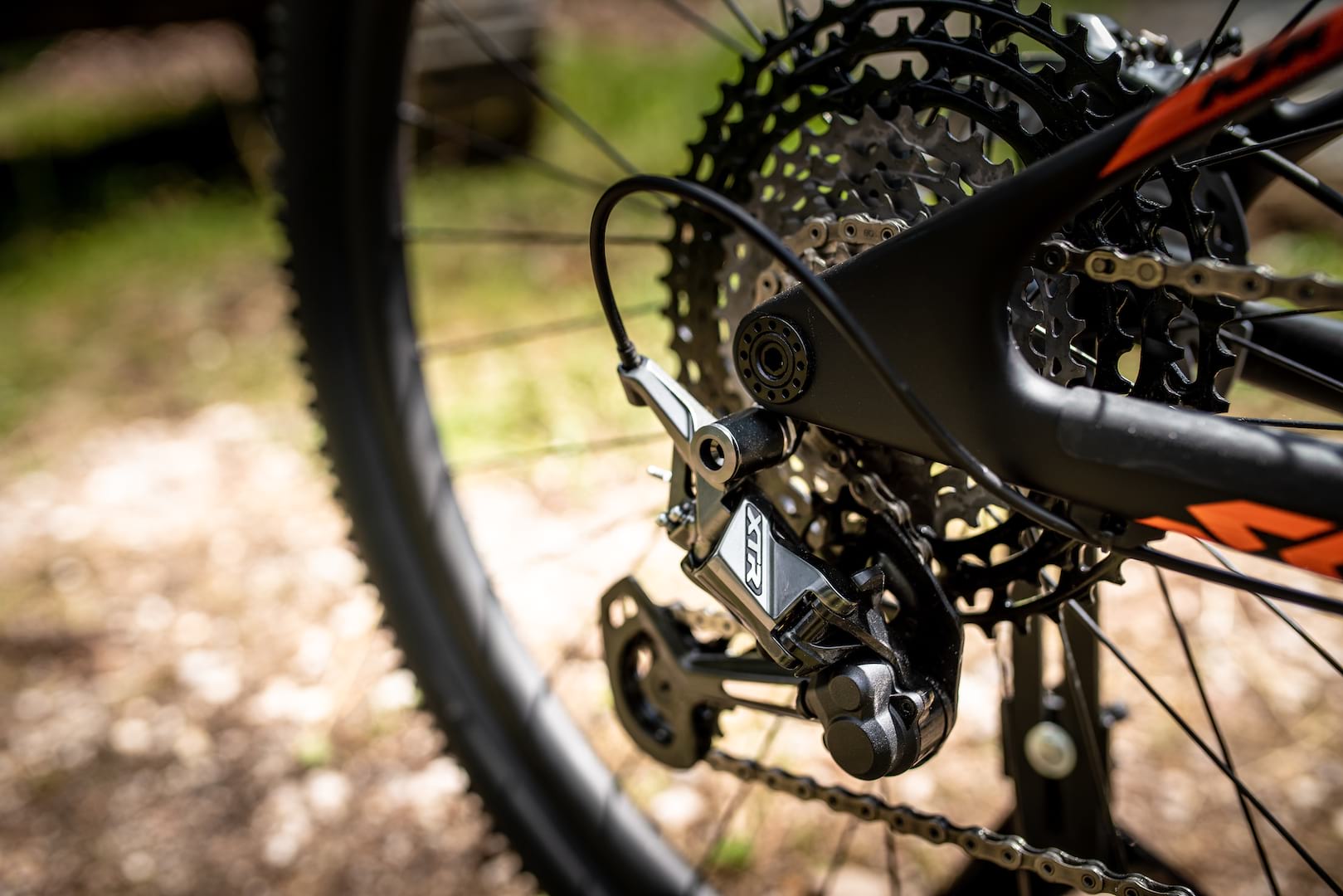
Shimano XTR M9100 Rear Derailleur
- Price: £189.99
- Claimed weight: 237g – 241g
There are three different rear derailleurs with the new XTR groupset. There’s a short cage 1x option that’s specific to the 10-45t cassette, a long cage 1x option for the 10-51t cassette, and a long cage 2x option for the 2×12 setup.
While the 2x derailleur has its own specific parallelogram (with slant angles specifically for the smaller 10-45t cassette), the 1x derailleur gets the same body for the long and short cage options. All mechs get a part alloy/carbon jockey wheel cage, with sealed bearings used for the oversized 13t pulley wheels. Shimano’s Shadow Plus one-way friction clutch is found inside the new XTR mechs, and like previous versions, the tension levels can be adjusted via a hidden allen bolt.
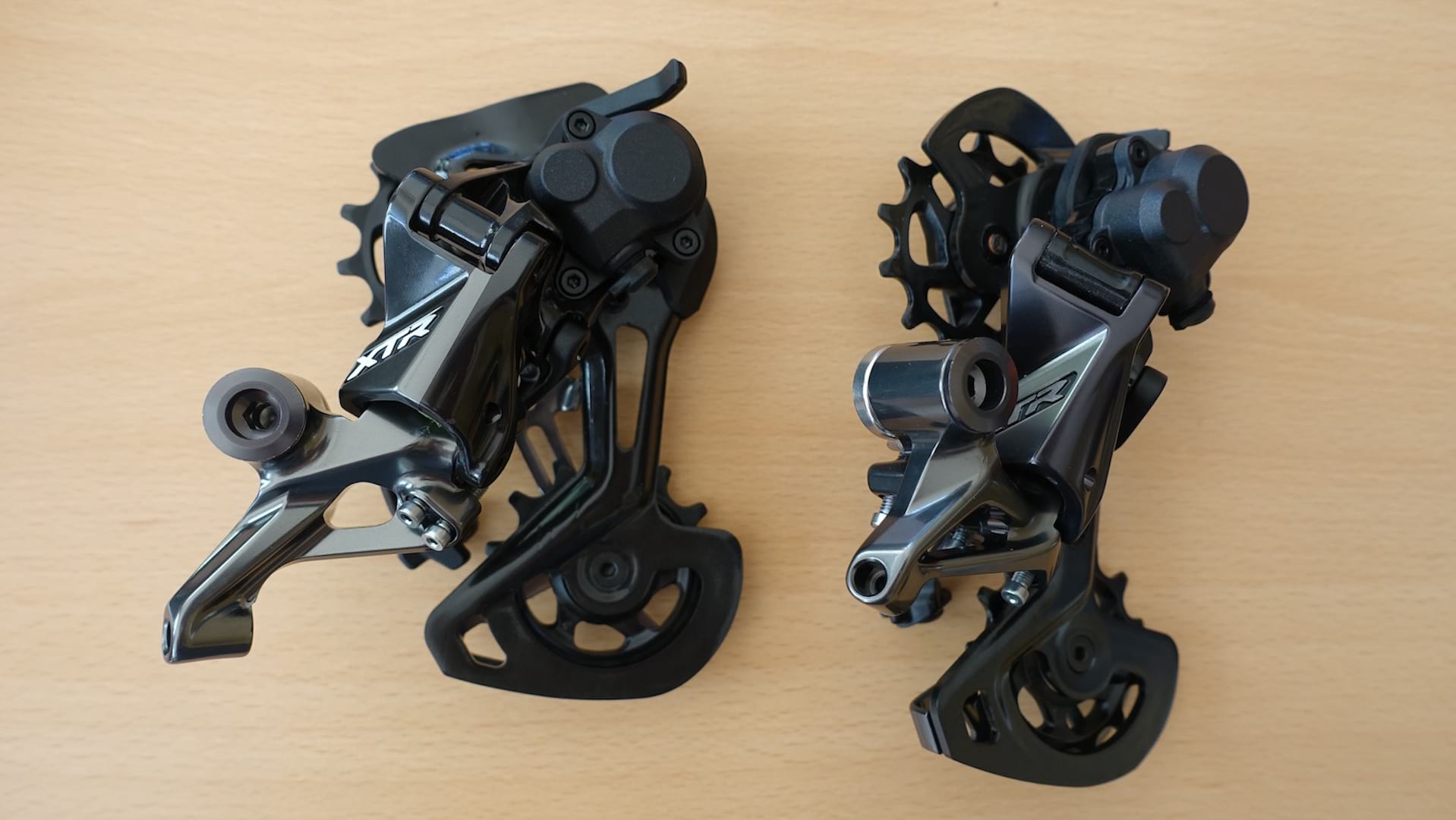
There are four small details on the rear mech that I really like;
- The upper jockey wheel is made from a more flexible plastic, which allows for smoother – and therefore quieter – operation with the chain
- A plastic bumper is used on the upper part of the jockey wheel cage, which silences chain-slap when you’re in the smaller sprockets
- For setting up B-tension, a printed line on the back of the cage provides for a visual guide to help with setup
- The cable exit point has been refined to allow for smoother, rub-free performance
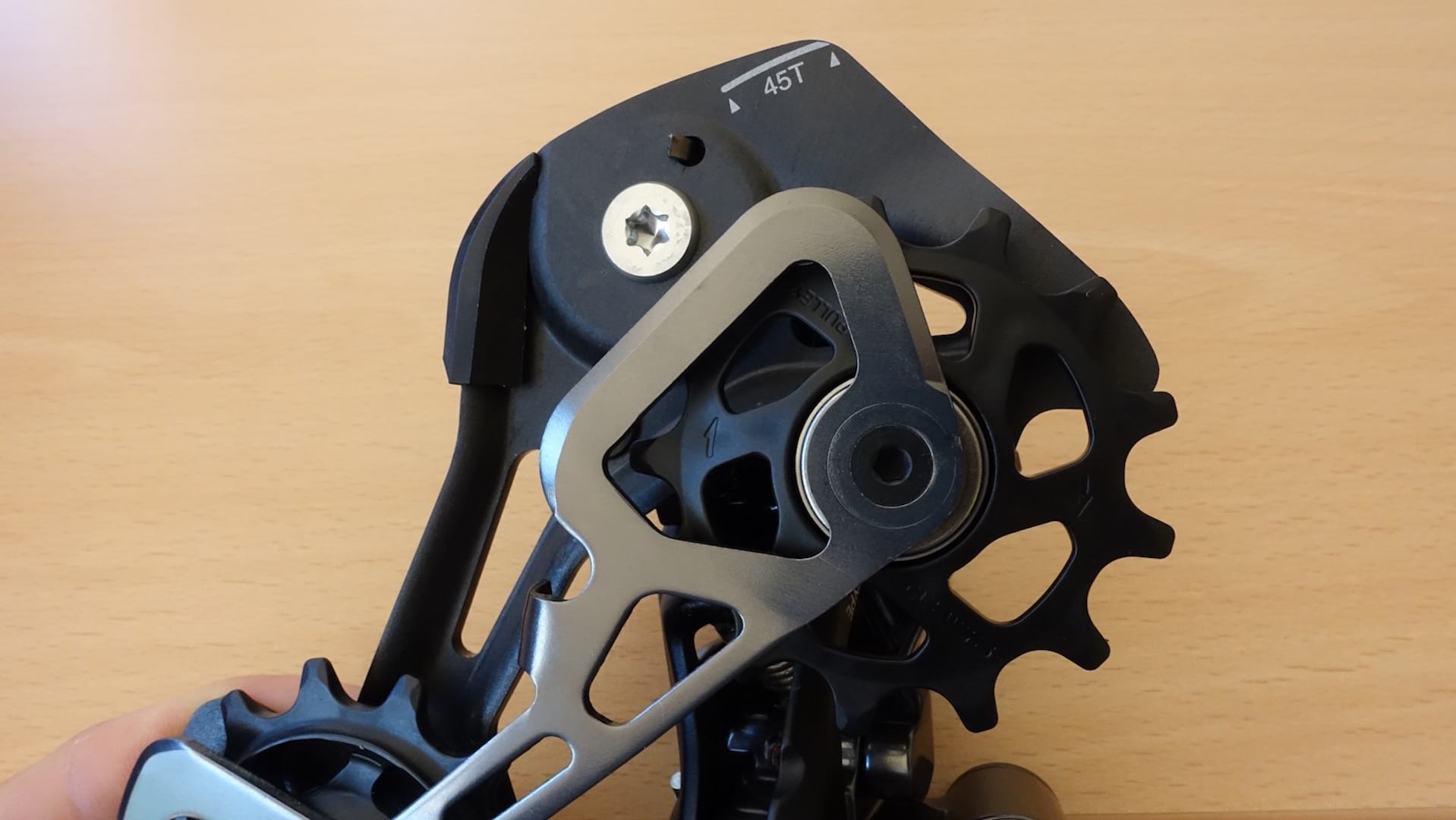
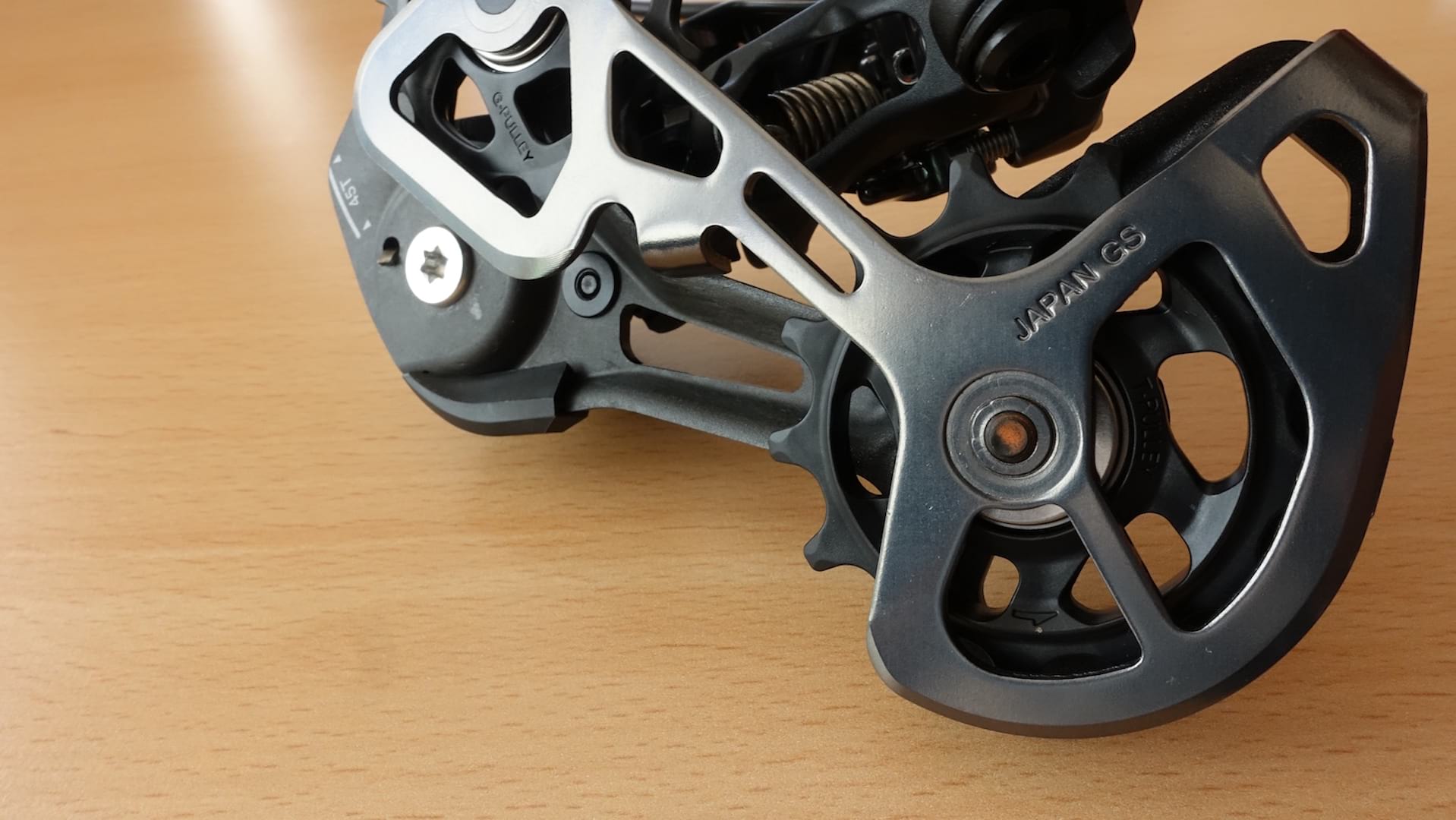
I did ask Shimano about the DRD hanger design, which Shimano has used previously and also recently introduced with the new Ultegra and Dura-Ace rear derailleurs. Apparently due of the new longer mech body required for the 12-speed XTR derailleurs, there isn’t enough room to build in such a design. So it’s back to just the one hanger design for XTR.
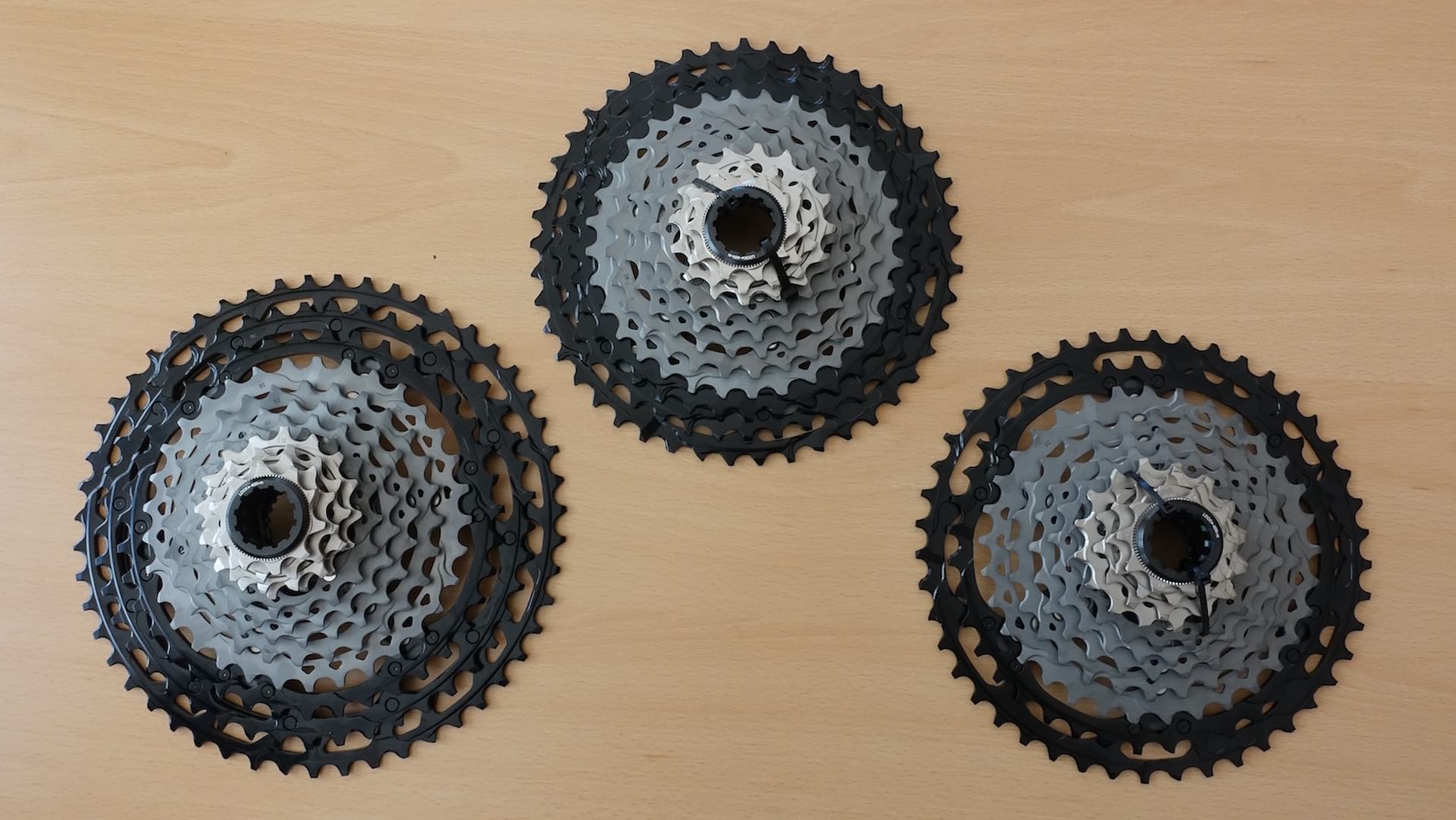
Shimano XTR M9100 Cassette
- Price: £289.99
- Claimed weight: 367g (10-51t)
The most eye-catching part of the new XTR groupset is no doubt the enormous 10-51t cassette. Joined by a 10-45t 12-speed option, and a 10-45t 11-speed option, the 10-51t cassette makes use of a new freehub standard called Micro Spline. Shimano has already caused a stir on internet forums everywhere with the introduction of Micro Spline, which it says was necessary to build a cassette with a tiny 10t sprocket. If Shimano didn’t do this, it would have had to have made an 11-56t cassette to achieve the same gear ratio. Before you get too angry about the new standard, bear in mind that this is the first change we’ve seen with Shimano’s freehub design since about 1993. 25 years is a pretty good run given all of the monumental changes since our bikes had 8-speed on them.

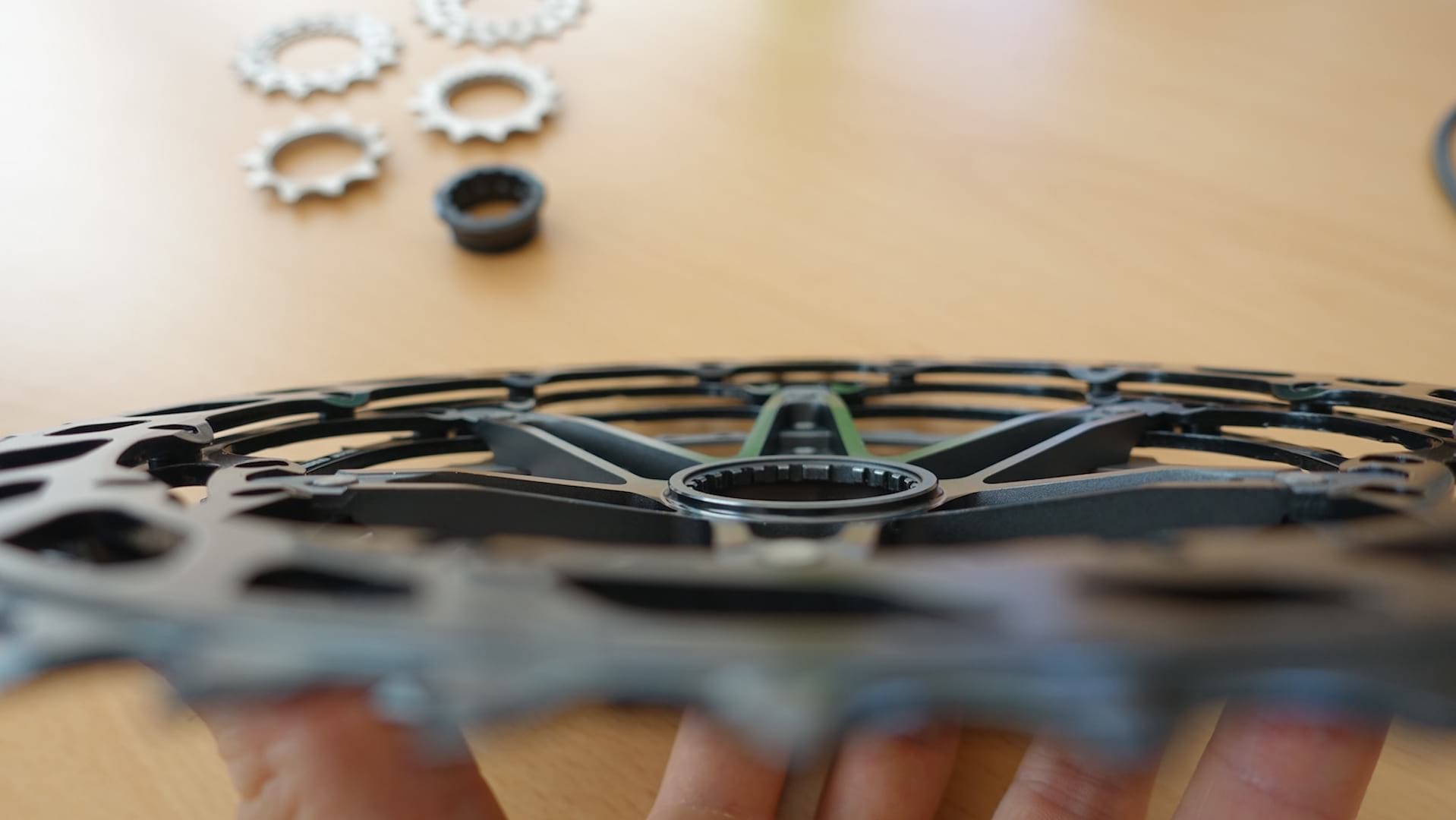
Yes, Shimano could have used SRAM’s XD freehub standard – which its American competitor uses to build highly intricate one-piece cassettes with a huge 10-50t ratio. However, Shimano doesn’t like to make cassettes like that – it prefers to make them from individual cogs, citing the manufacturing expense as the main reason why it didn’t pursue the XD standard. Of course price isn’t that big of a concern with XTR, though you can bet the Japanese brand will be filtering its 12-speed design down to cheaper groupsets in the future, where price will be of greater importance.
Instead, the XTR cassette is made with three large alloy sprockets, and five titanium sprockets that are riveted to an alloy central carrier. These are then joined by four individual steel sprockets. Weight is very competitive – Shimano claims 367g for the XTR 10-51t cassette, which is very close to the 360g weight of an Eagle XX1 cassette.
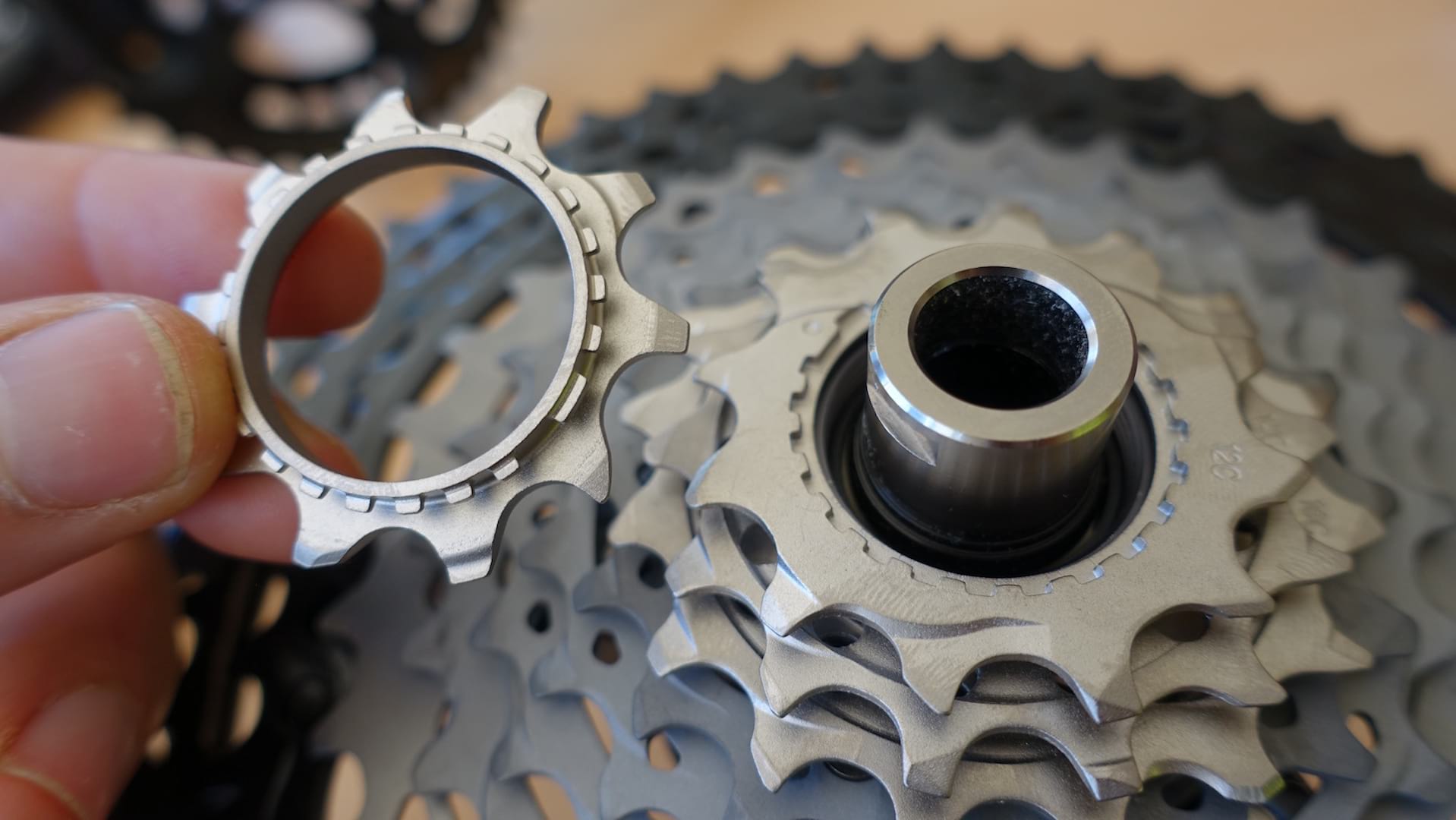
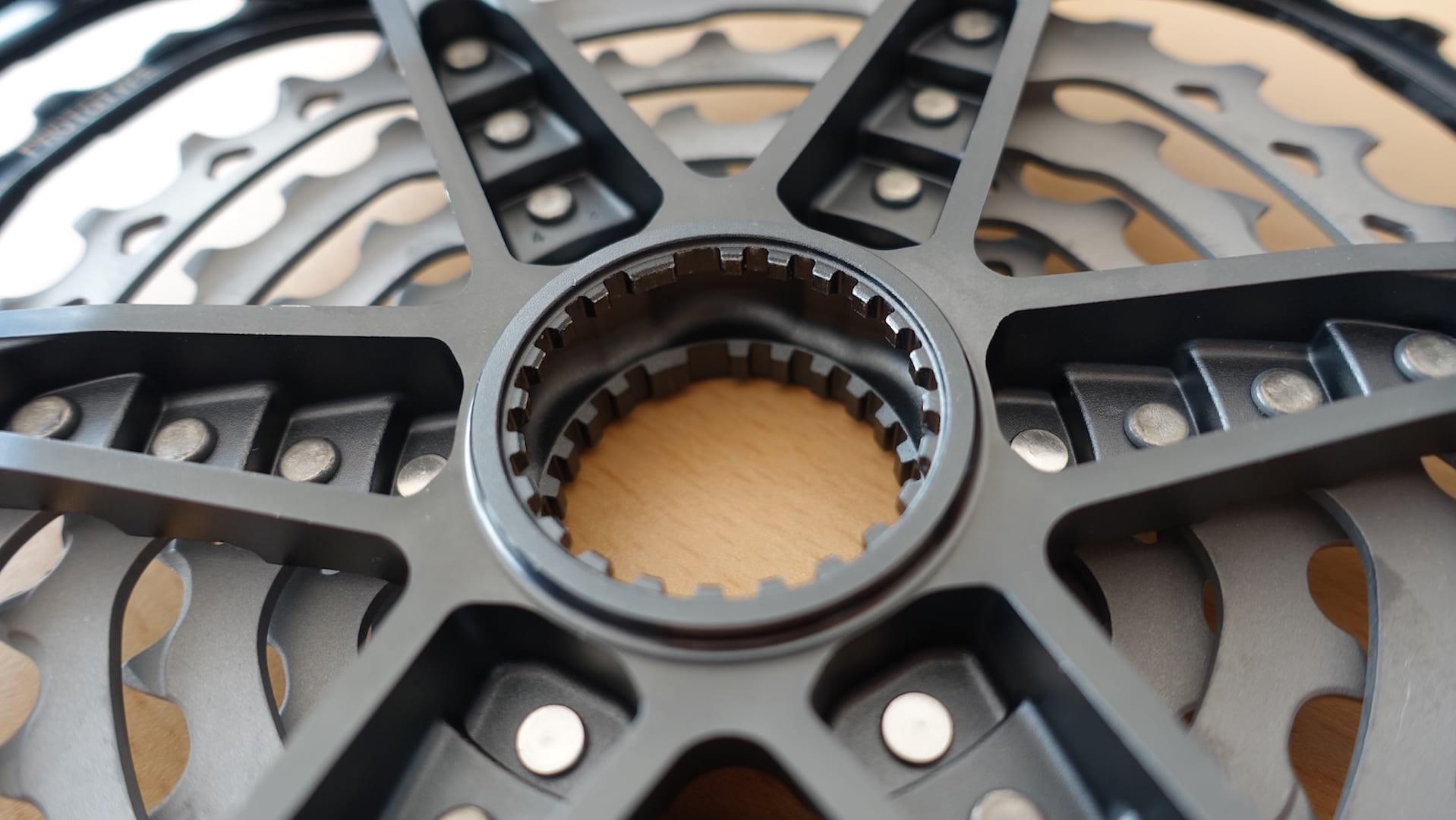
The cassette slides onto the freehub using a splined system not unlike current Shimano hubs/cassettes, though the splines are deeper, and there are more of them. This likely contributes to the overall strength, given there’s likely to be a helluva lot of torque going through that enormous 51t sprocket. Shimano also rates the new XTR drivetrain as being fully e-MTB compatible.

Shimano XTR M9100 Chain
- Price: £49.99
- Claimed weight: 242g
Matching the new groupset is a brand new 12-speed chain. There is only one chain available, which will cover the 1x, 2x and 11-speed setups. The chain uses Shimano’s SIL-TEC coating for the rollers and inner links, and it is also directional – you install it with the logos facing outwards. Likewise, the joining link is designed with a curved shape that follows the profile of the chainring – just SRAM’s Flow Link.
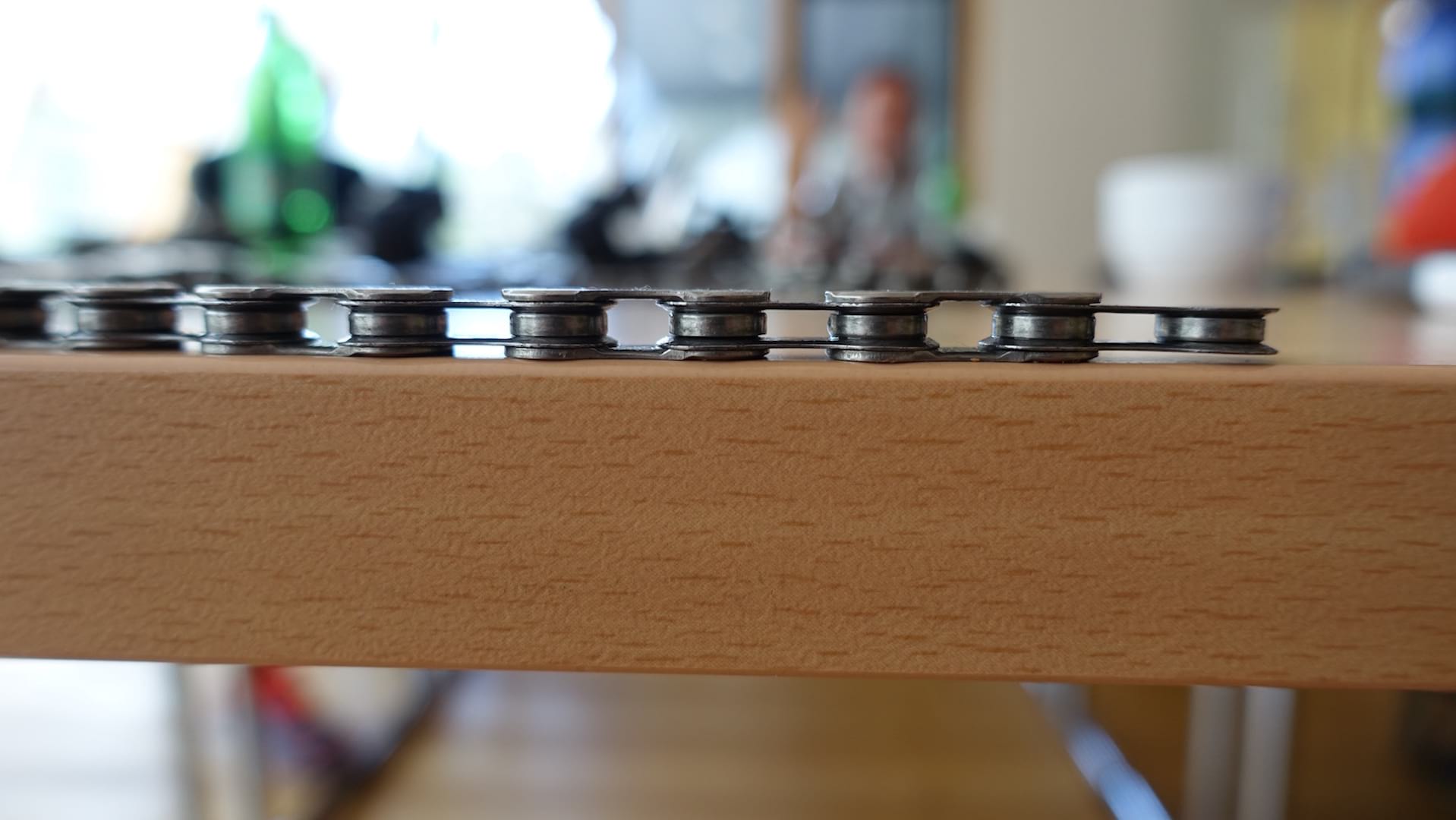
Get closer, and you’ll see an incredible amount of detail that’s gone into the internal shape of the chain. The chamfered inner plates have been designed as such to mesh with the narrow-wide profile of Shimano’s 1x DCT chainrings – a design that it says does not infringe on SRAM’s X-Sync chainring patent. Whatever the case, the result is a very smooth and clean interface between chain and chainring, which affords greater chain retention and supposedly smoother performance. I didn’t drop a chain during the three days of riding I had on the XTR groupset, and everything was nice and quiet, but I’d need more time on it in some really wet and muddy conditions to see how it fares in the long run.
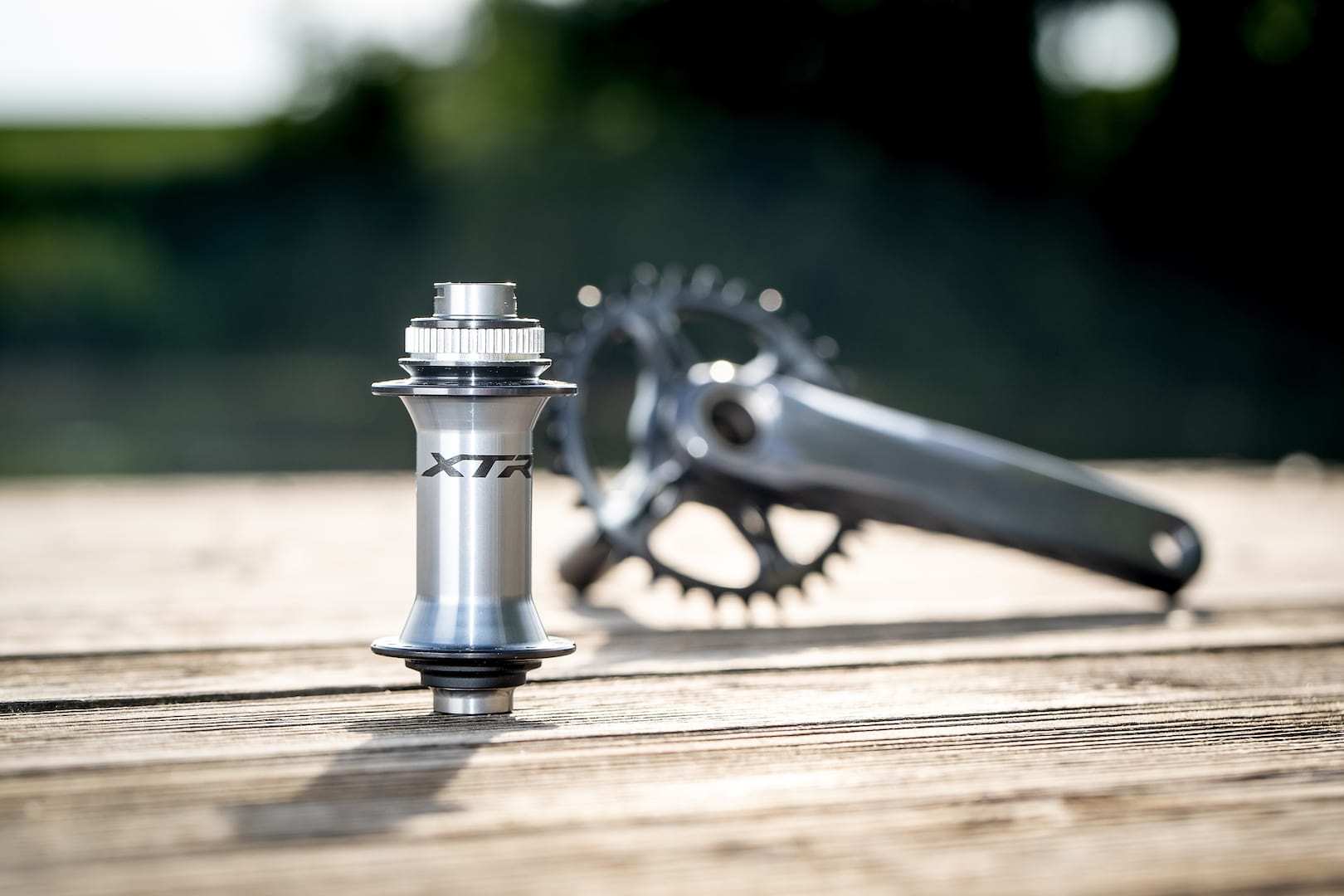
Shimano XTR M9100 Hubs
- Price: £134.99 (front) & £249 (rear)
- Claimed weight: 134g (front) & 231g (rear)
Because the complete wheelsets are behind schedule, the bikes we rode at the XTR Media Camp were built with carbon rims and Shimano XTR J-bend hubs. There is no ETA on complete wheels, so for 2019 model year bikes, expect to see a lot of custom wheels built with other brand’s rims and Shimano hubs.
Shimano will be offering the new XTR hubs in Boost and non-Boost options, and in J-bend and straight pull styles as well. In addition to those, Shimano will have a cheaper MT900 non-series hubset available that will come in at almost half the price (£54.99 & £134.99 for the front and rear hubs). The difference is mostly in the hub shell, with the XTR hubs getting a lighter and more exotic alloy.
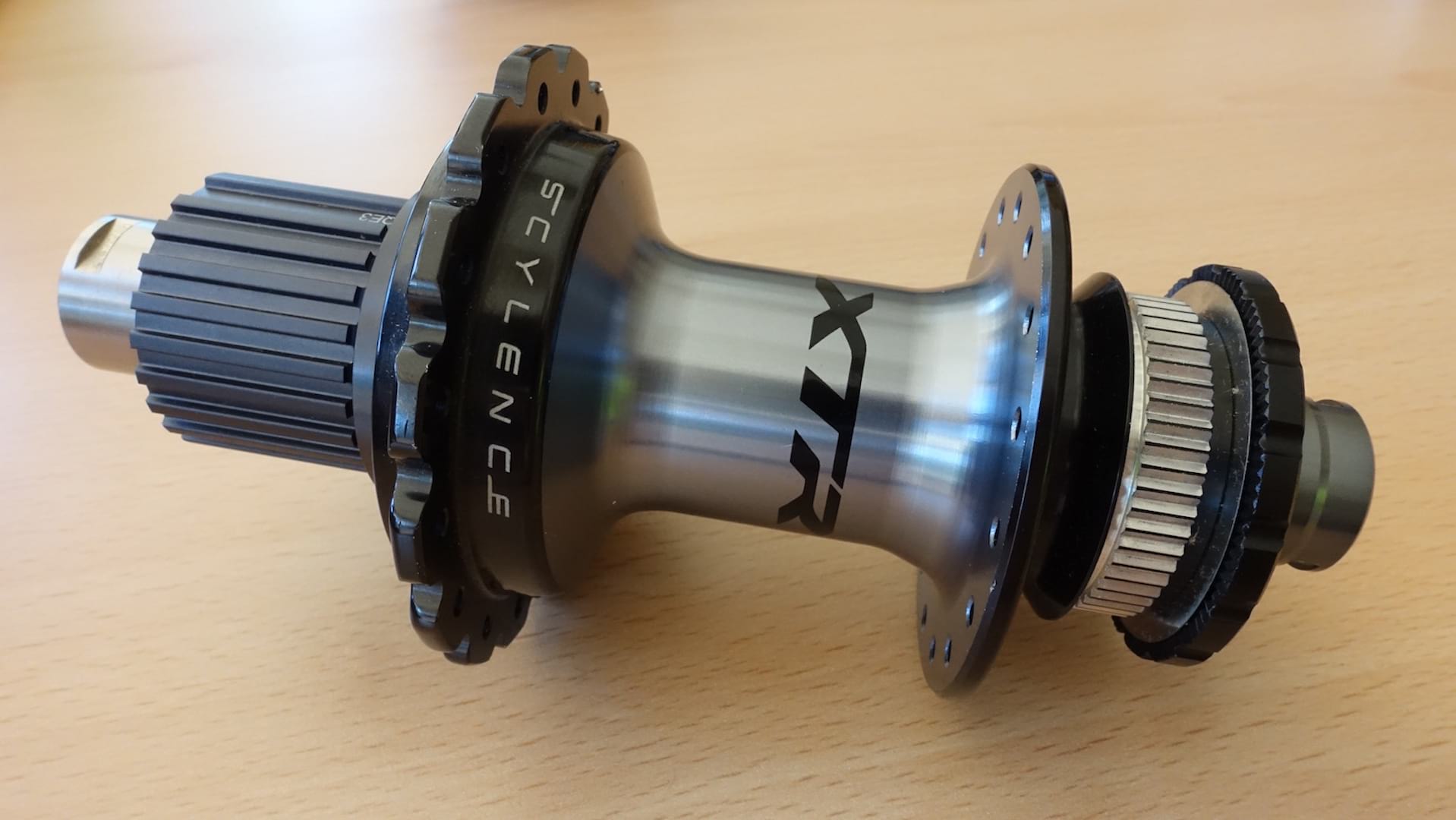
Both hubsets will feature the Micro Spline freehub design, with a lightweight titanium freehub body. The serviceable cup ‘n’ cone bearing system remains, with a combination of labyrinth and contact sealing aiming to keep grease on the inside, and crud on the outside. Shimano is sticking to its guns on the bearing design, which it says offers efficiency and side-loading benefits over cartridge bearing designs.
Interestingly, while the bearings are serviceable, the freehub is not – kind of the opposite to almost every other hub manufacturer. The Scylence freehub is all sealed up (just like the freehub systems in other Shimano hubs), so you can’t get to it to service. However, Shimano states that it has built it so it doesn’t need regular servicing in the first place. Inside a ratchet system delivers quick 7.6° engagement, and because the sprung drive plate retracts during coasting, the hub is pretty much silent.
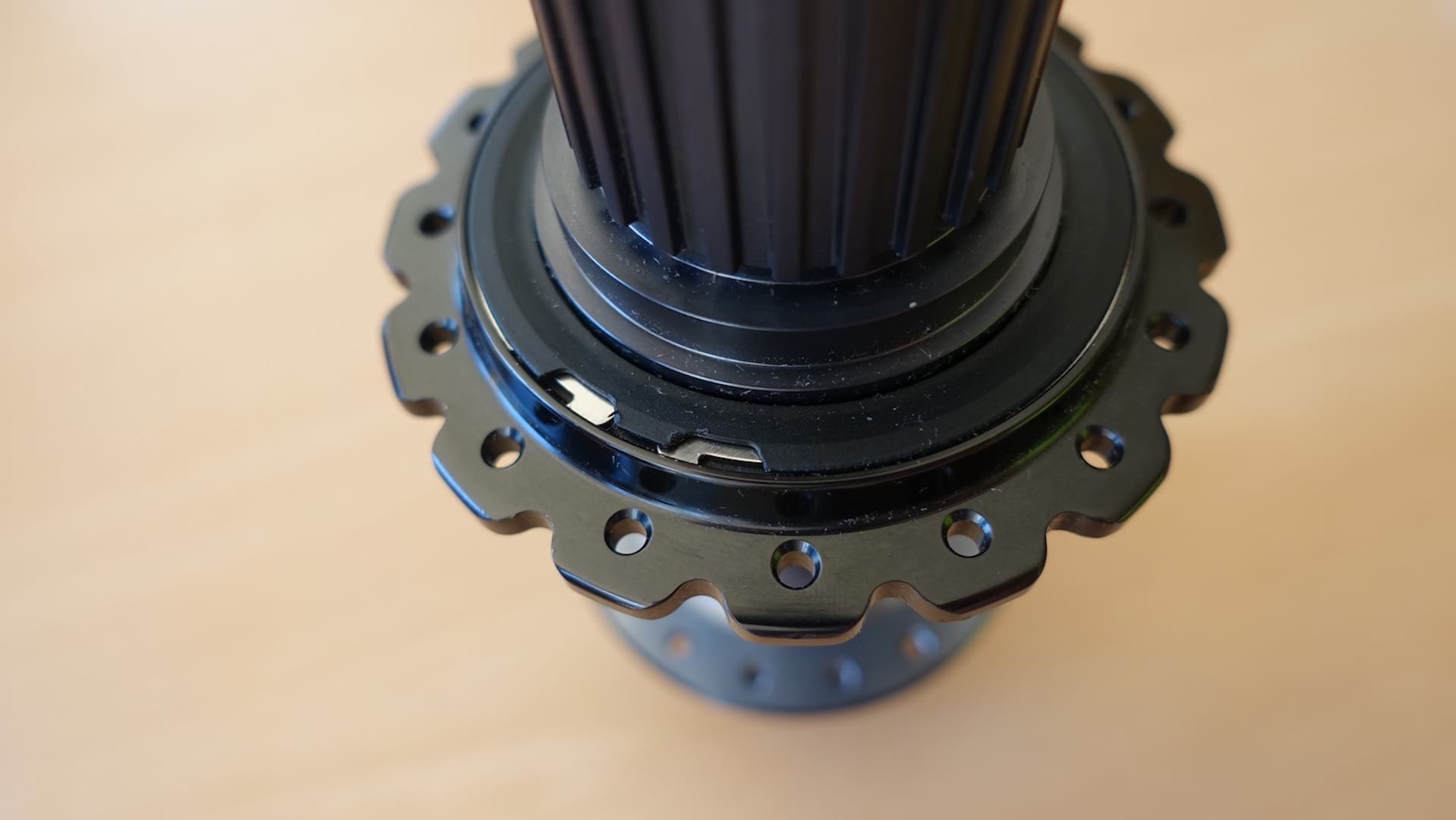
The hubs I rode at the launch were the standard 12-speed version, though if you’re considering the 1×11 setup, there’s a specific hub for that. The ‘Wide Flange Hub’ is exactly as it sounds – the total width is the same, but the freehub body is narrower due to the narrower 11-speed cassette, while the hub flanges are spaced out wider. Wider flanges can build up a stiffer wheel with greater spoke triangulation, making for a stronger wheel. Combined with the lighter 11-speed cassette, Shimano is marketing this 1×11 drivetrain specifically towards high-level XC and enduro racers who value that additional rear wheel stiffness and lower weight.

Shimano XTR M9100 Shifter
- Price: £94.99
- Claimed weight: 74g (I-Spec EV direct mount option)
To go with the new 12-speed drivetrain, Shimano’s new XTR shifter features an extra click, along with new guts that provide (claimed) 20% quicker lever engagement, and a reduction in shift force of 35% shifting (vs the previous M9000 shifters). You can get the new shifter with a standard bar clamp, or with the I-Spec EV mount that allows you to bolt it directly to an XTR brake lever. Compared to I-Spec II, the I-Spec EV mount affords greater lateral and angular adjustability for getting the paddles in the right place. However, it is another new standard.
*sigh*
I really like the little rubber traction pads used on the new XTR shifter paddles though – these feel great to the touch, and they offer an increase in grip without having to resort to stick-on skateboard tape. The pad on the large shift paddle is also replaceable – how neat is that!


I also dig the double up-shift, which I find useful for 1x setups when you need to rattle through a few more gears at a time. But while Shimano says it has reduced lever effort required to shift, I did find the punchy up-shift to require a decent amount of force. Oh, for those who still upshift with their forefinger, you’ll be glad to know that Shimano has retained the 2-way release shifting. Another small detail is the mode selector – the one shifter can be flicked between 12-speed and 11-speed configurations.
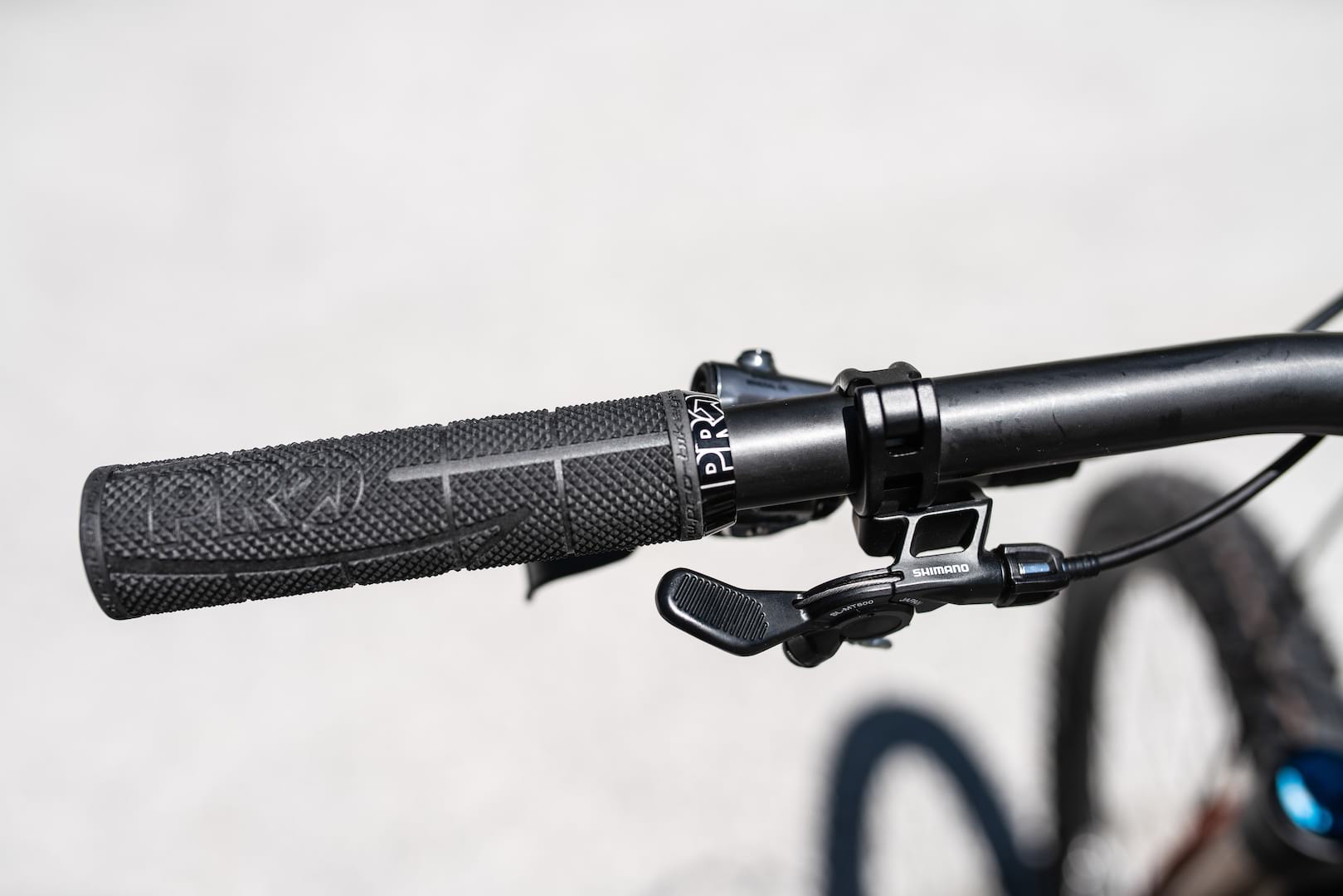
Shimano MT800 Dropper Post Lever
- Price: £44.99
- Claimed weight: TBC
Though not strictly part of the XTR drivetrain, Shimano has released a new dropper post lever at the same time. Badged up as the MT800 lever, this little guy is designed to be used with the PRO Koryak dropper post – or any other cable-operated dropper post for that matter, since you can run the cable either way round.
Like the shifter, the MT800 can be used with a regular bar clamp, or via the integrated I-Spec EV mount like I tested. It provides a really neat cockpit setup when bolted to the left hand brake lever, and there’s a good bit of adjustability to it. Sitting underneath the bar where a front shifter would otherwise sit, the paddle itself is a good size and it has traction grooves machined into it. Sadly there’s no rubber pad like the XTR shifter paddles though.
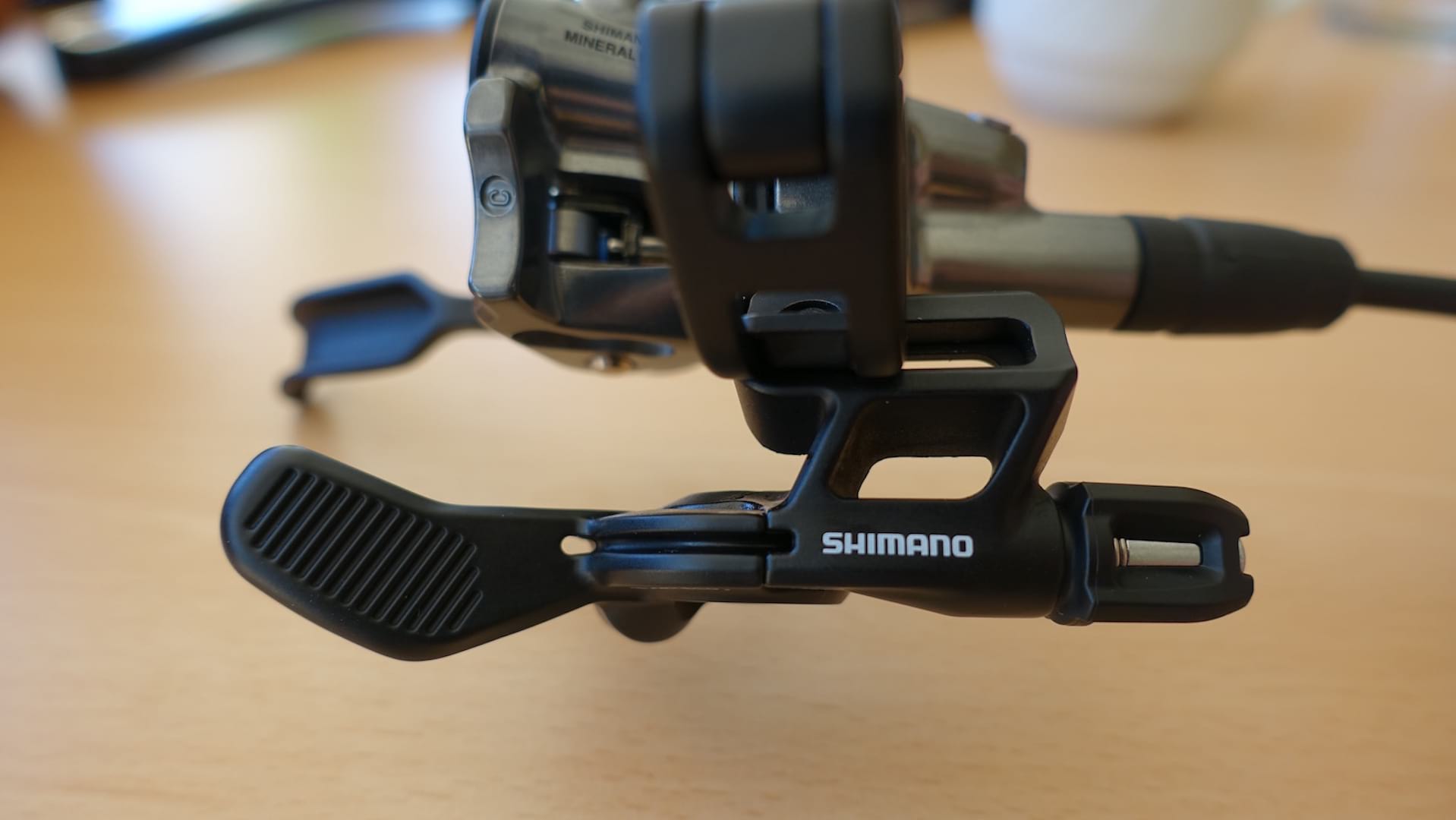
In action, the dropper lever works well. It’s smooth, and there’s minimal play present. That said, I found the paddle to sit up too close to the bar/grip. I found my thumb would rub quite a lot on the grip as I pushed the dropper lever through its stroke. I’d like to see some extra adjustability here in order to put the dropper paddle away from the bar a little further – more like the position of the shifter paddles.
What do you think of new XTR? Are you into it? Or is there something here that rubs you up the wrong way?
We’d love to hear your feedback, so leave us any comments or questions down below!

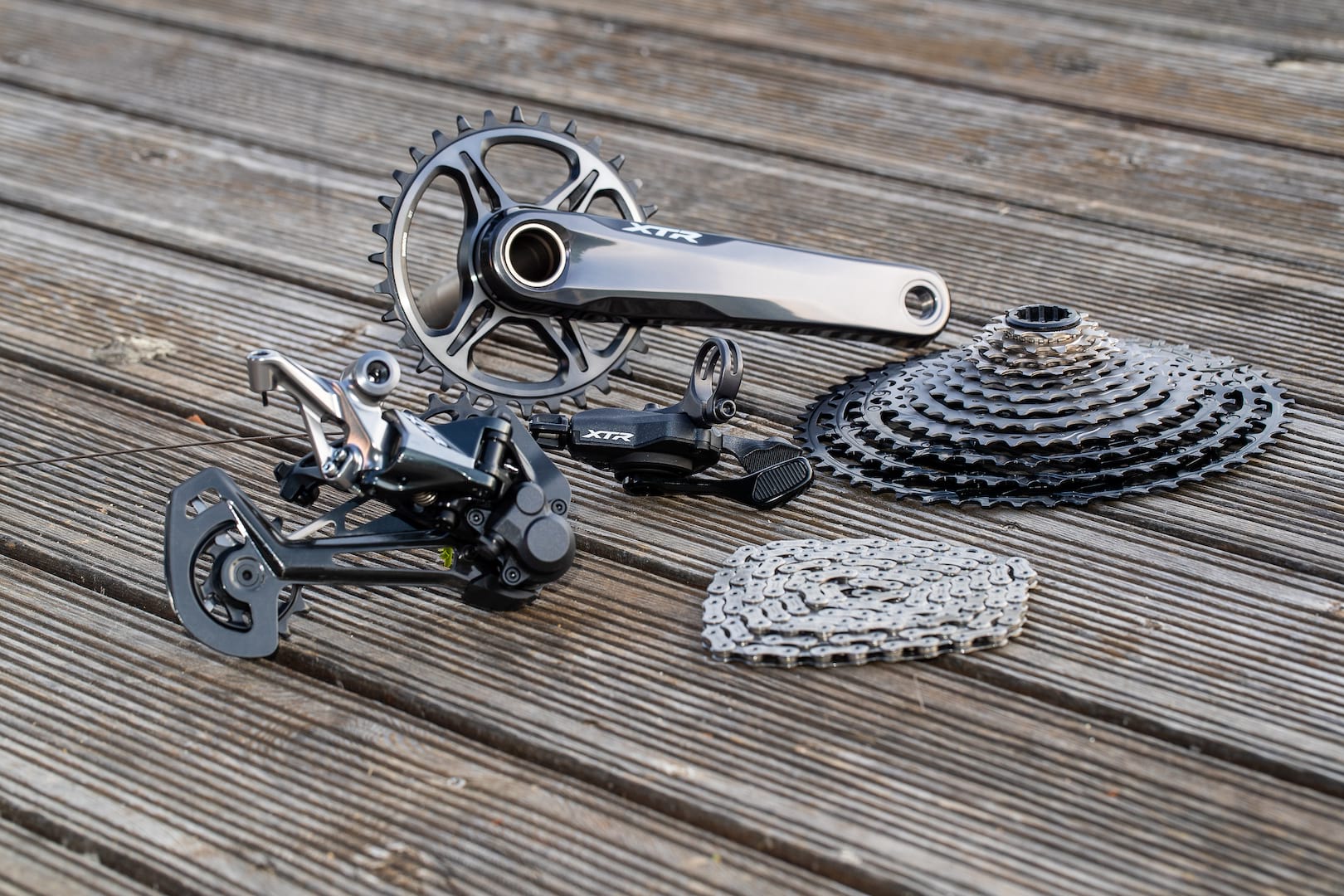




Looks superb. I’d really love a silent freehub, but I ain’t having no cup’n’cone bearings! Cartridge just work and last pretty much forever in hubs. And wouldn’t it have been nice if all manufacturers had used the same spline system for direct mount chainrings?!
“freehub is not user serviceable”
Well I’ve gone right off them then. I was even considering dipping a toe back into the world of cup and cone until I saw that. Spent enough time as a poor student trying flushing cleaner through and then trying to coax lubricant into an old shimano freehub to get some more life out of it to be bothering with that again. Especially as they’re not going to be cheap to replace.
Woo! Back to the 90’s with a silent clutch hub!
I’ve always wanted a silent freehub, as I find noisy ones really irritating! Now I’ve just got to wait for the silent hub tech to work its way down to Deore level to have any hope of ever getting it!
Any one know if the sprocket spacing is the same as Sram/Sunrace? ie can you swap the cassettes?
Another non standard Standard. Great. I was getting bored of the lack of choice in cassette/hub interface designs.
@DezB – I hear you on the direct mount chainrings. There are more spline standards than there are crank brands!
@Swanny853 – Shimano’s freehubs have been a non-serviceable cartridge item for some time – as far back as I can remember anyway. Shimano’s viewpoint is that if the mechanism is sealed properly, it shouldn’t need routine servicing. I suspect they’d rather not have users poking around the internals either.
@mrmo – I asked that exact question on the launch. According to Horada from Shimano Japan, the spacing on their cassette is near-identical to SRAM, so in theory, you could use a SRAM Eagle cassette and chain with a Shimano XTR 12-speed shifter and derailleur. Of course Shimano hasn’t tested this, and I’m sure SRAM wouldn’t be stoked about mixing & matching either. We’ll be trying it soon enough though 🙂
@robertajobb – Funnily enough, it’s the first change in cassette/freehub standard for Shimano since 1993 when it rolled out 8-speed. I’m honestly surprised we’ve not seen a change earlier!
ST Wil.
Thanks Will, so you could realistically run a cheapish sunrace cassette to save wear and money through the winter or to stick with an existing HG freehub. Actually makes upgrading not that expensive.
Cup ‘n’ cone bearings and a silent hub? Massive deal breaker. Let’s “Hope” the boys in Lancashire do the right thing and provide real world alternatives ASAP.
What is the torque settings for the new crank bolt design?
One thing I love about the old Shimano pinch bolt crank set up was the ease of removing the cranks without a bloody big 8mm allen socket and torque wrench. I’m using XT cranks now for that very reason, will be a shame if they move all their cranks over to a single bolt a la SRAM.